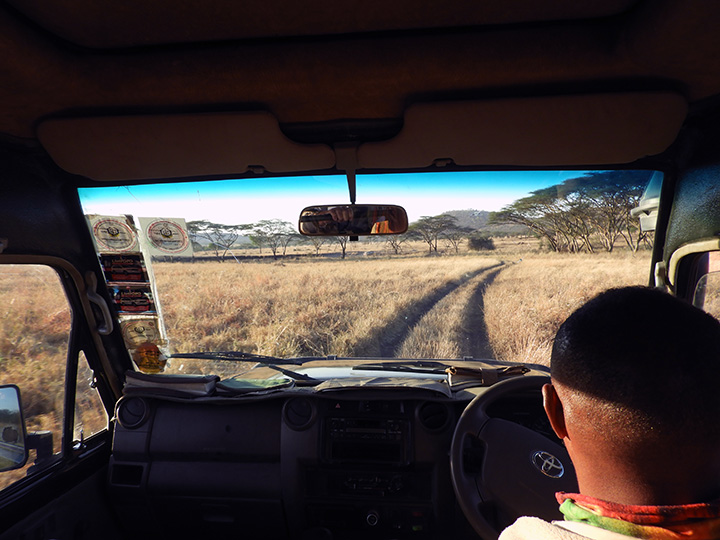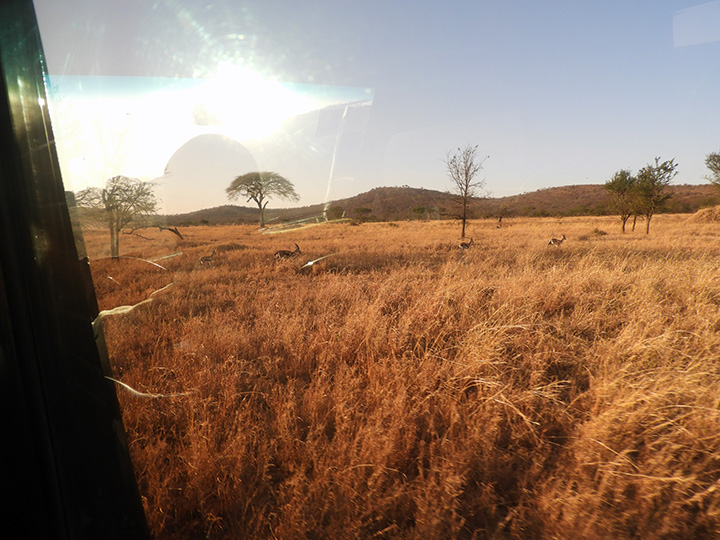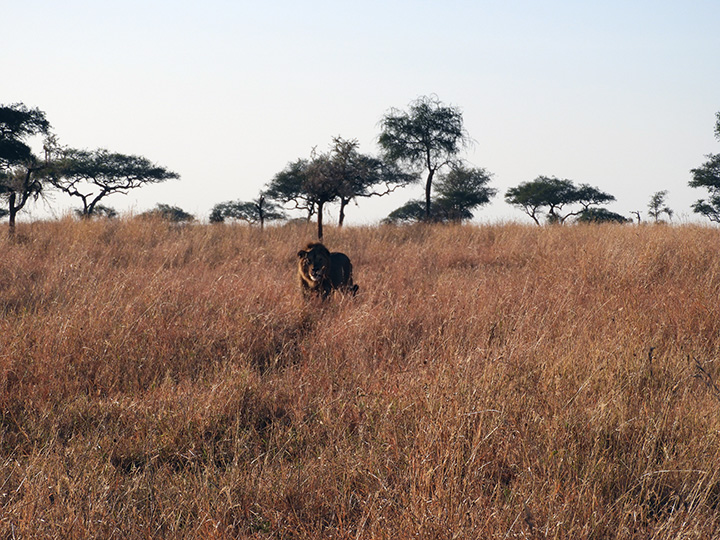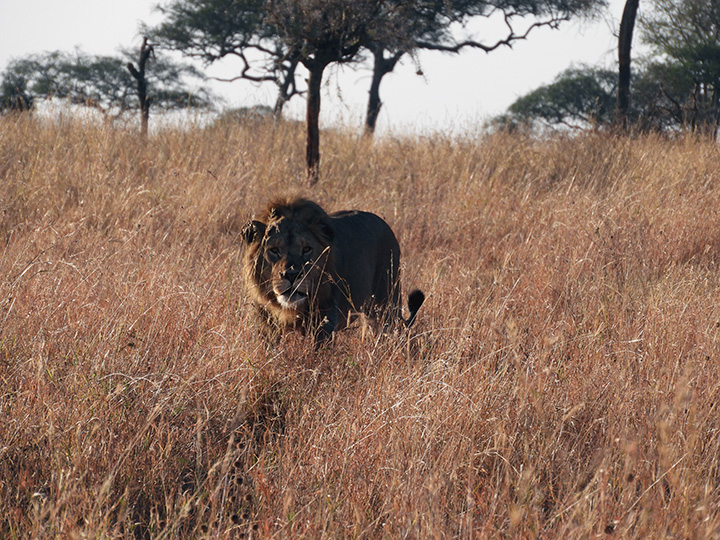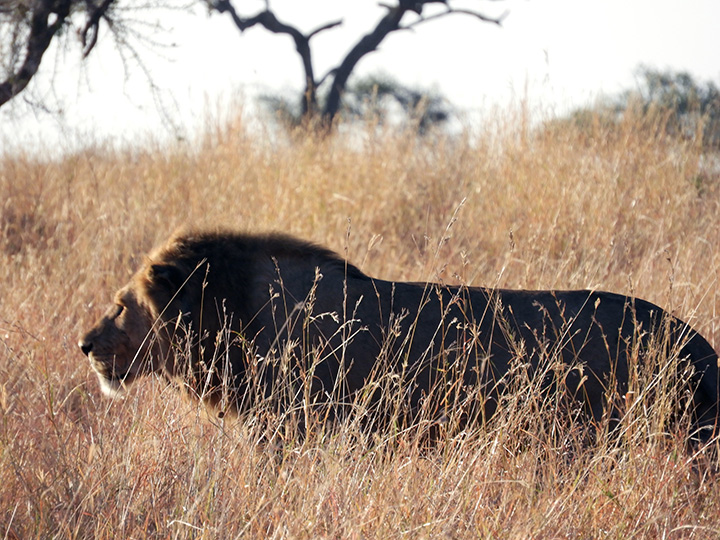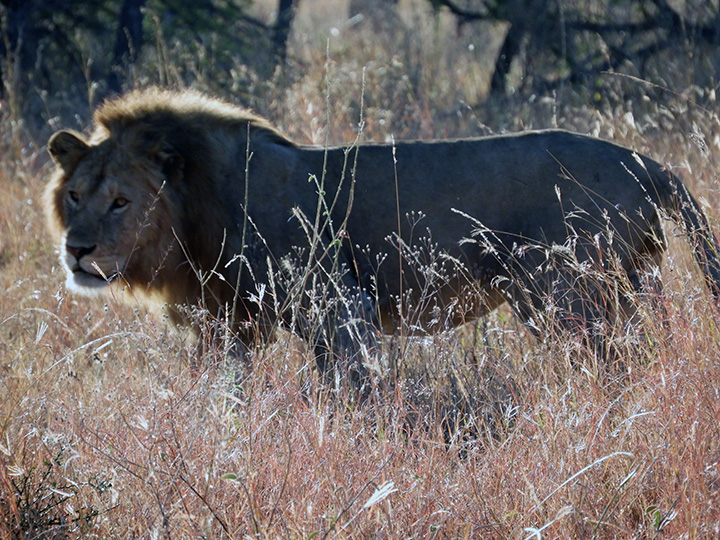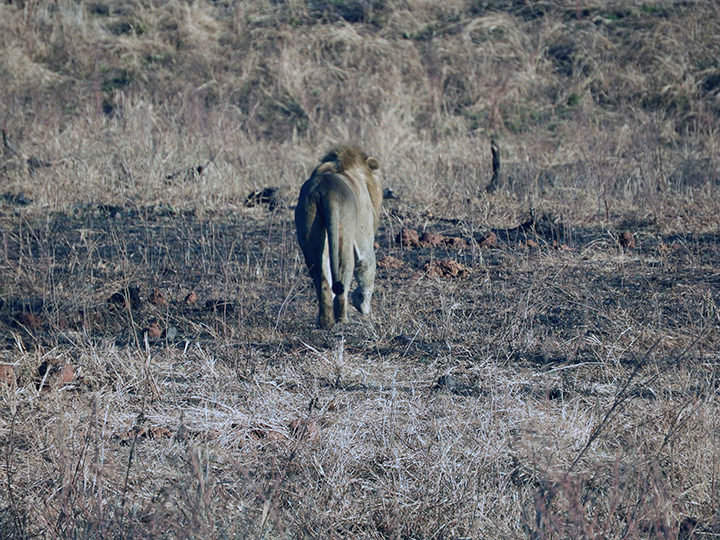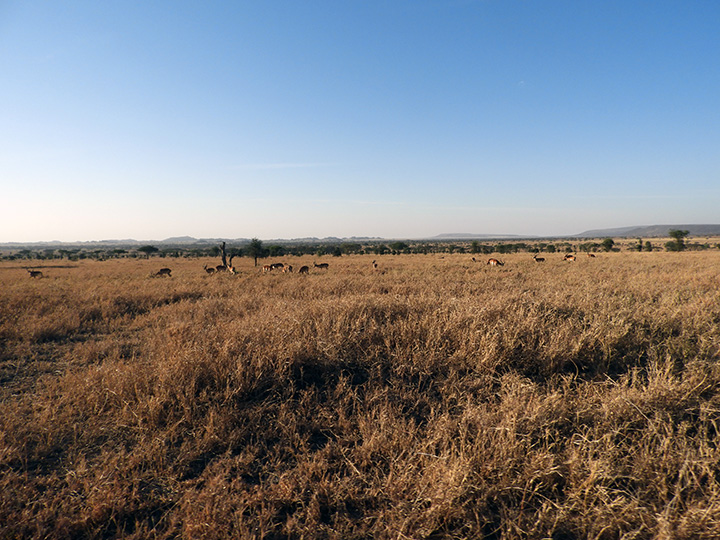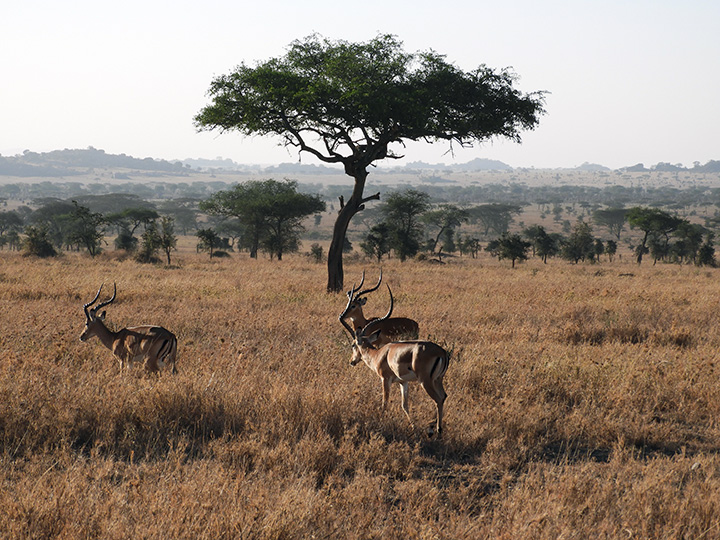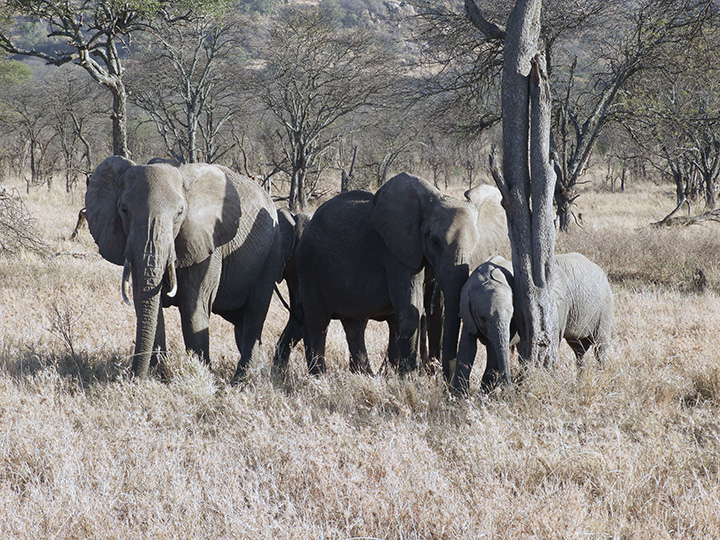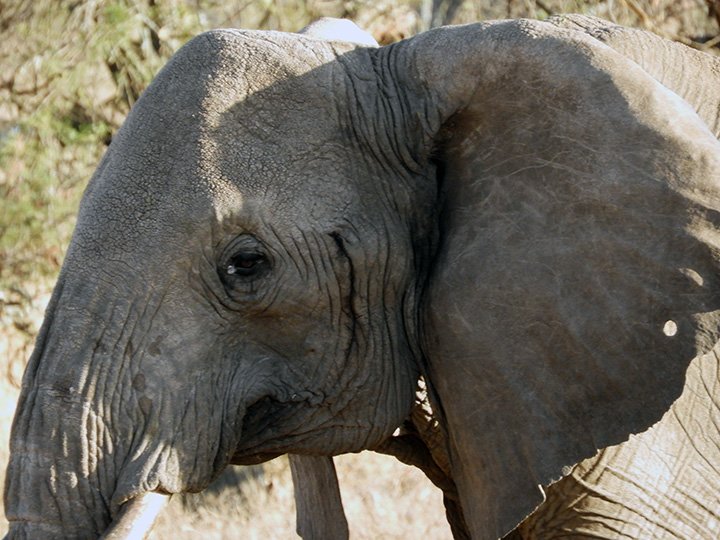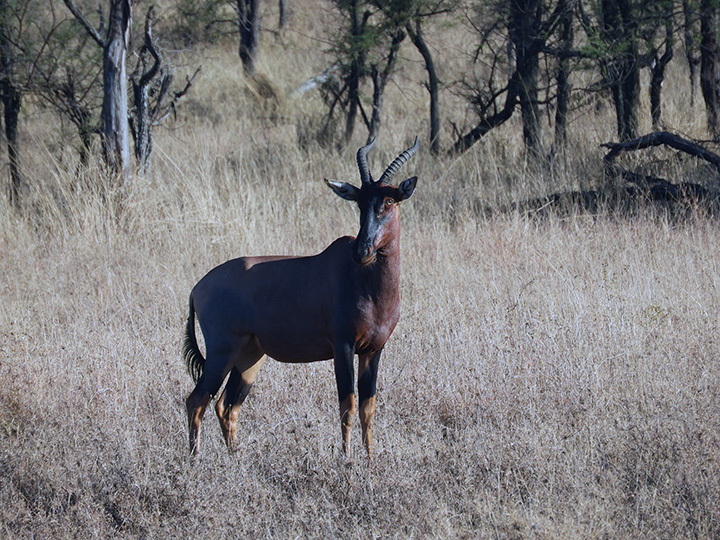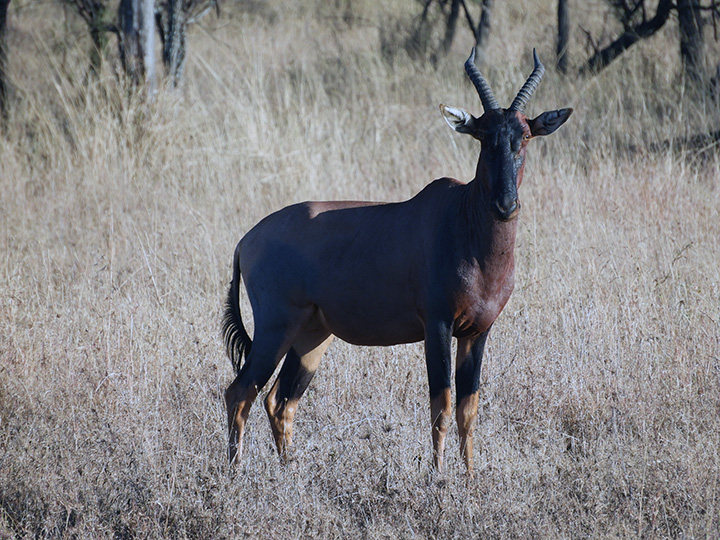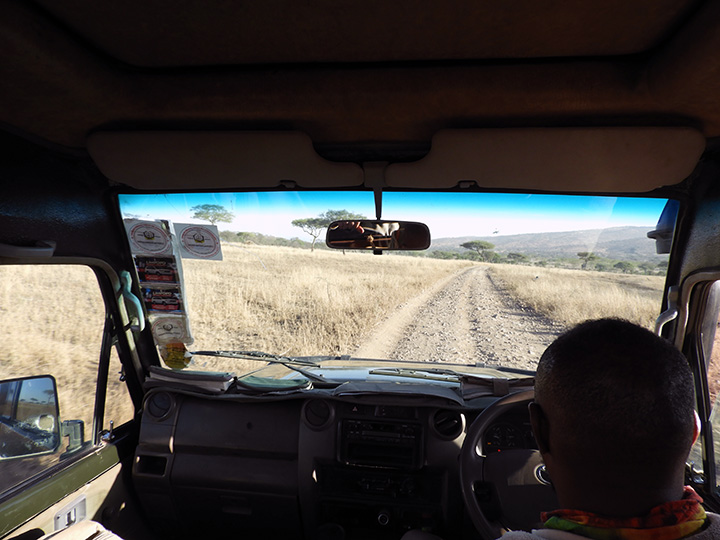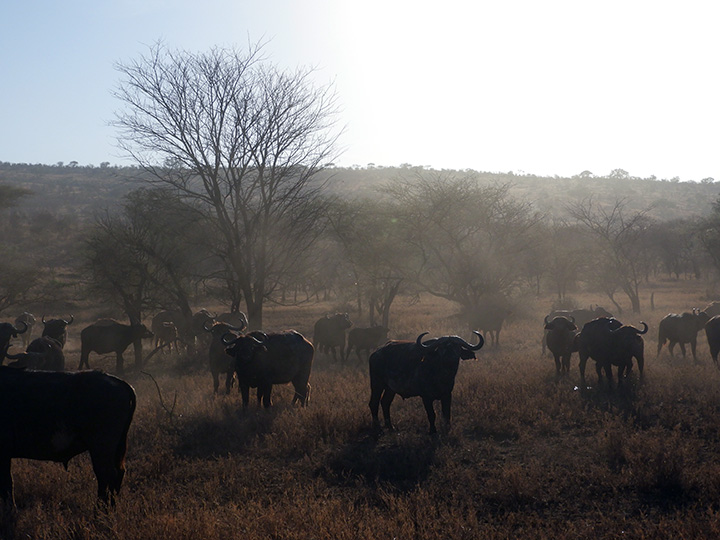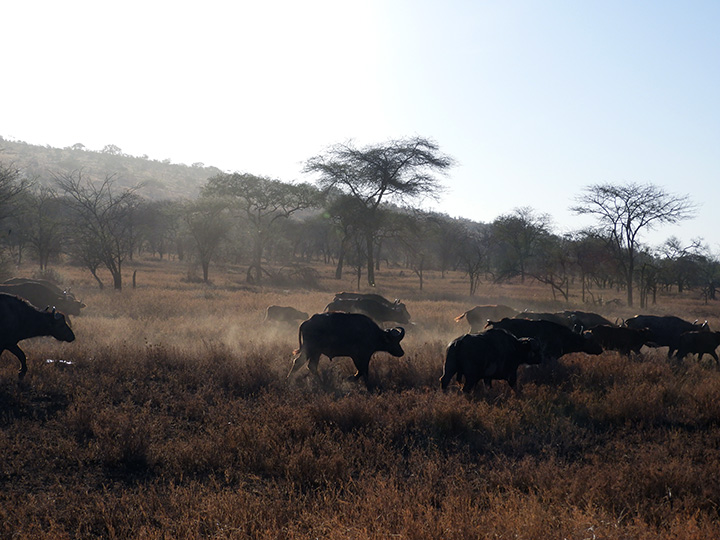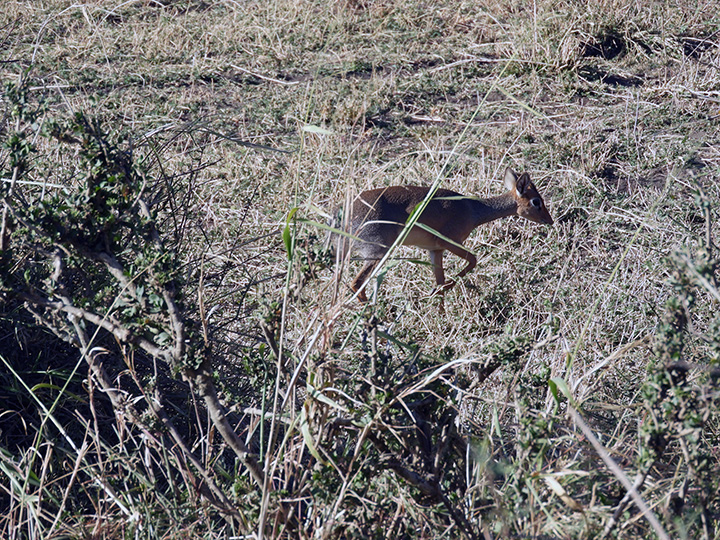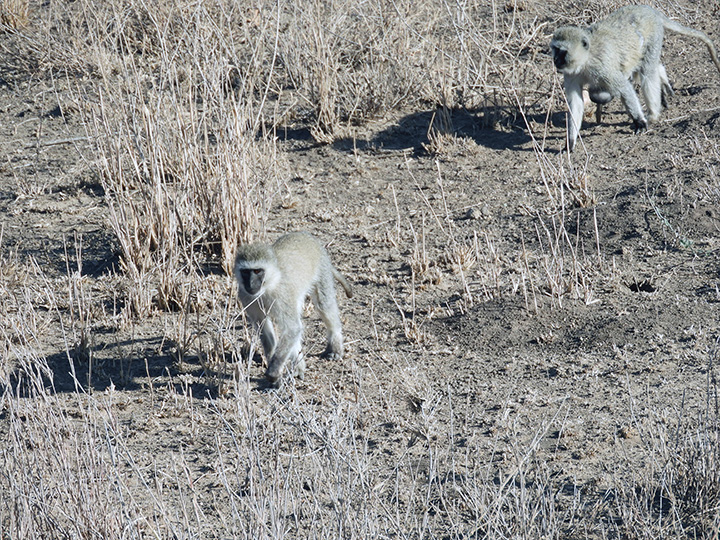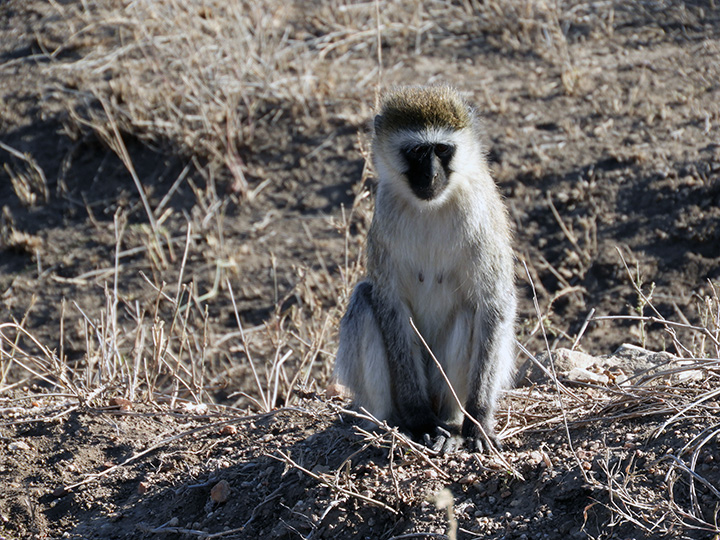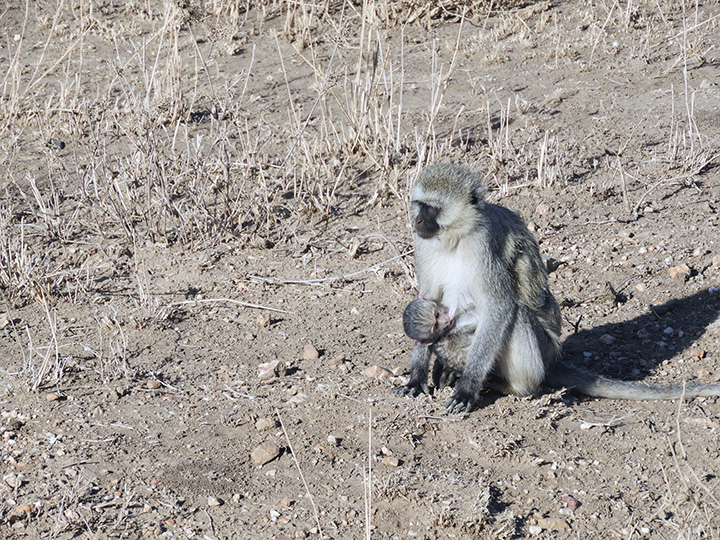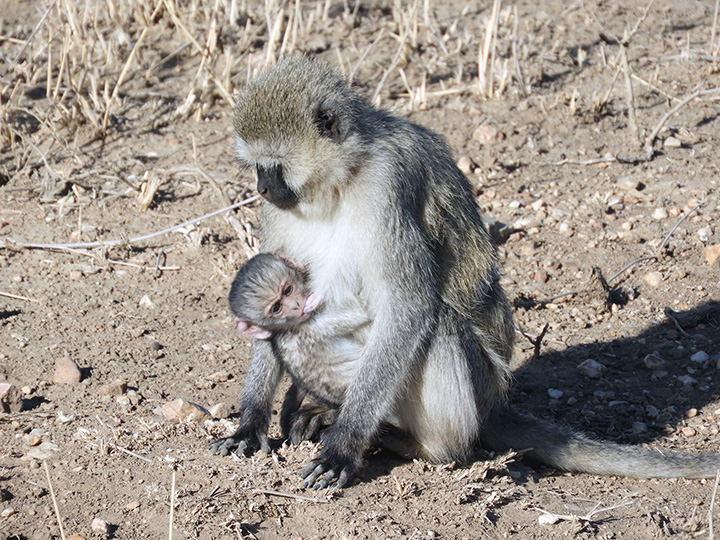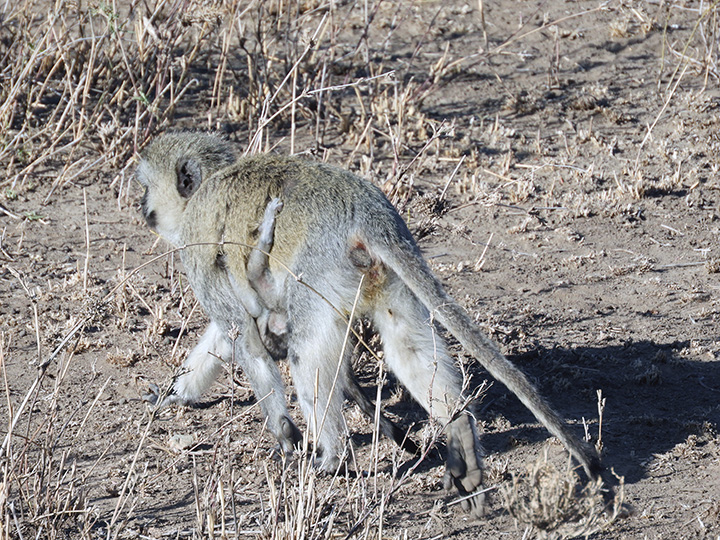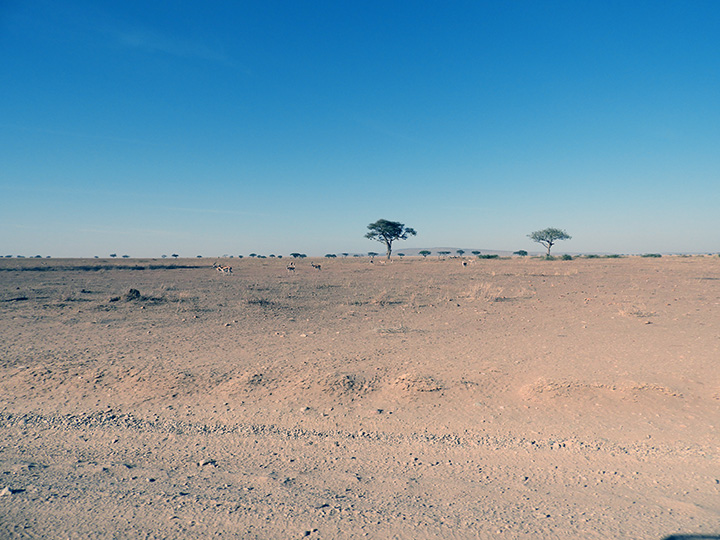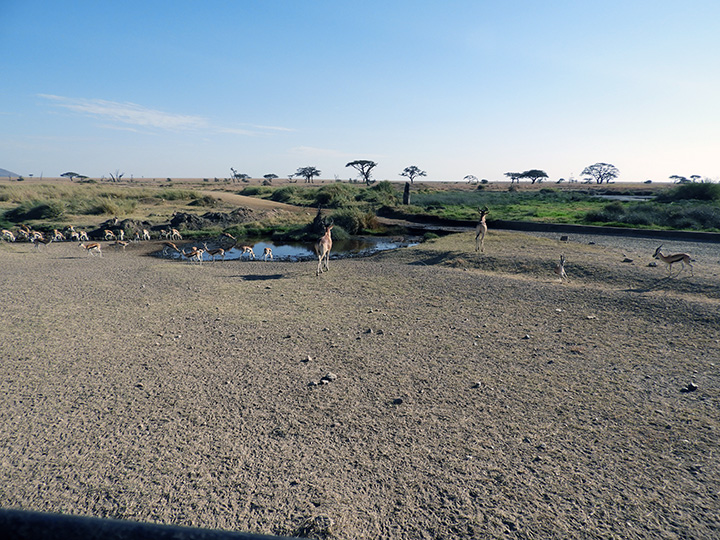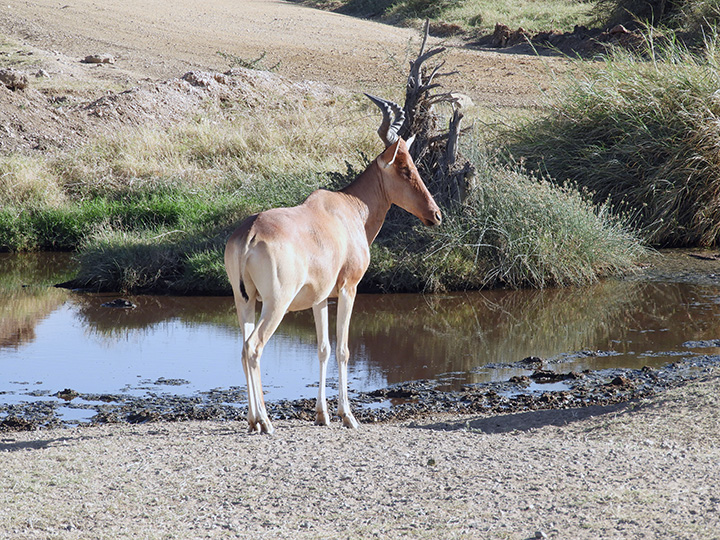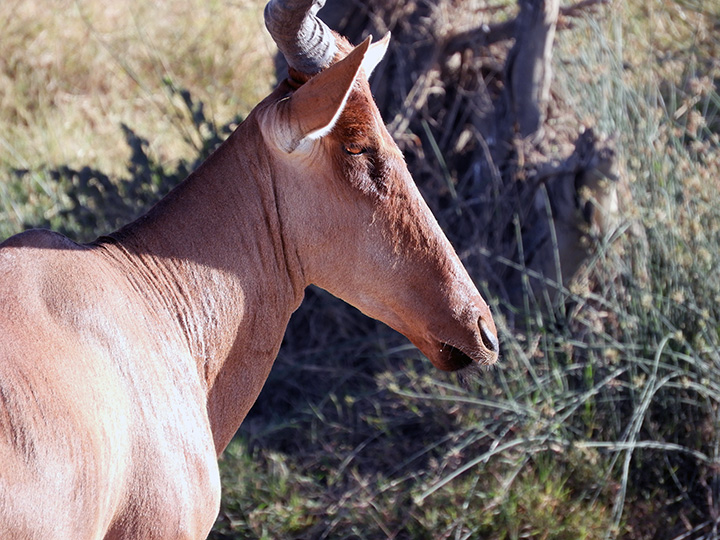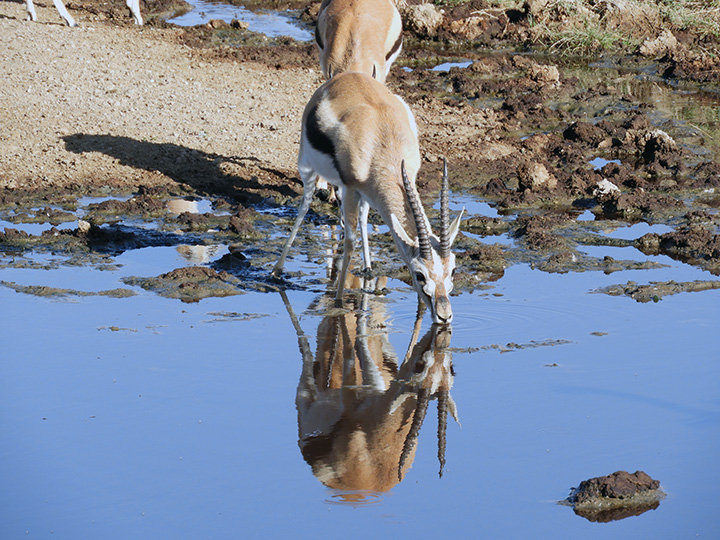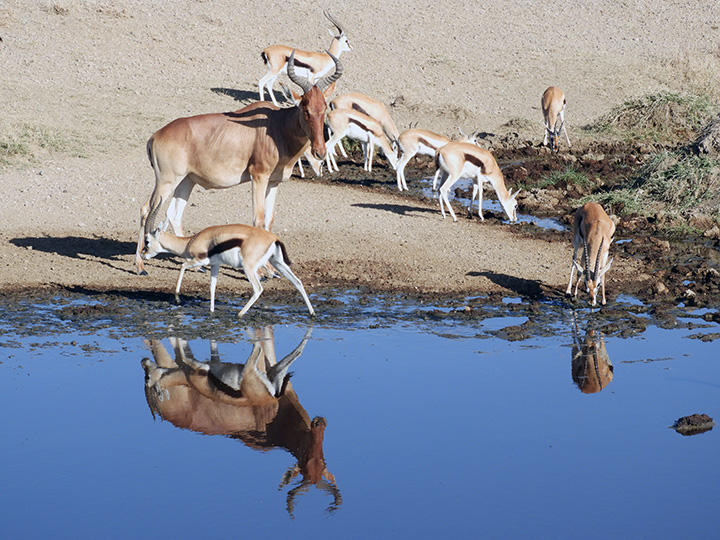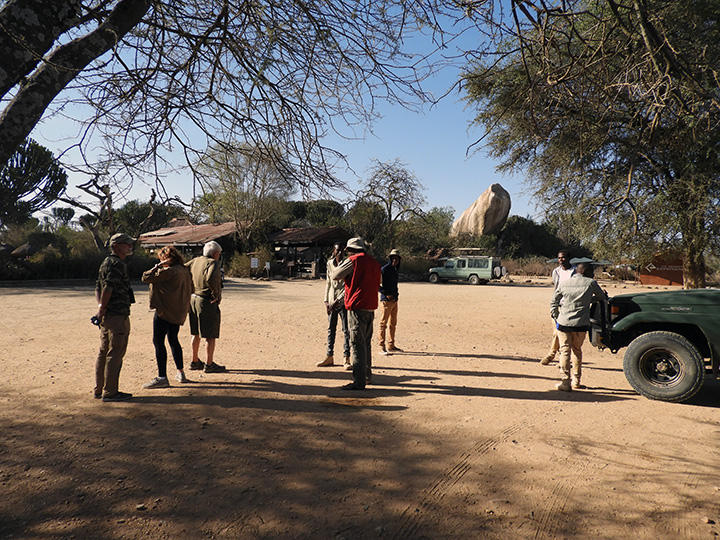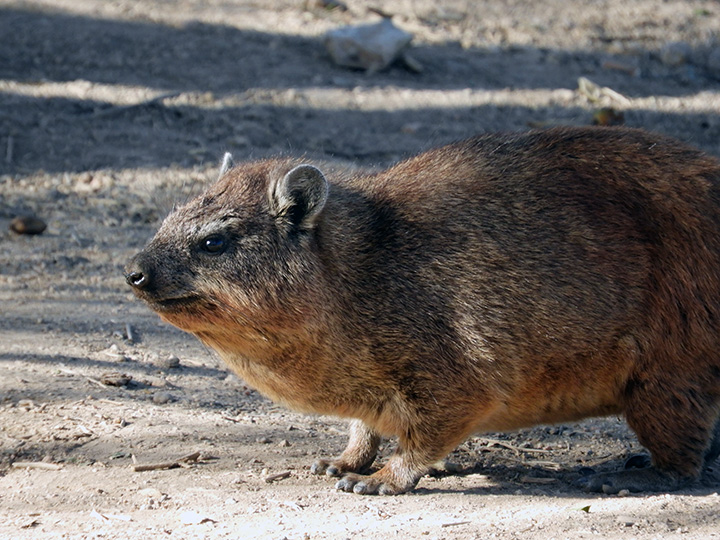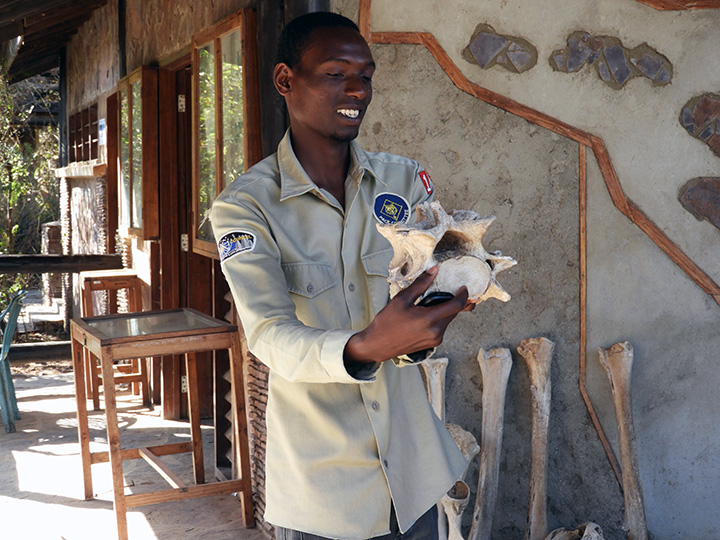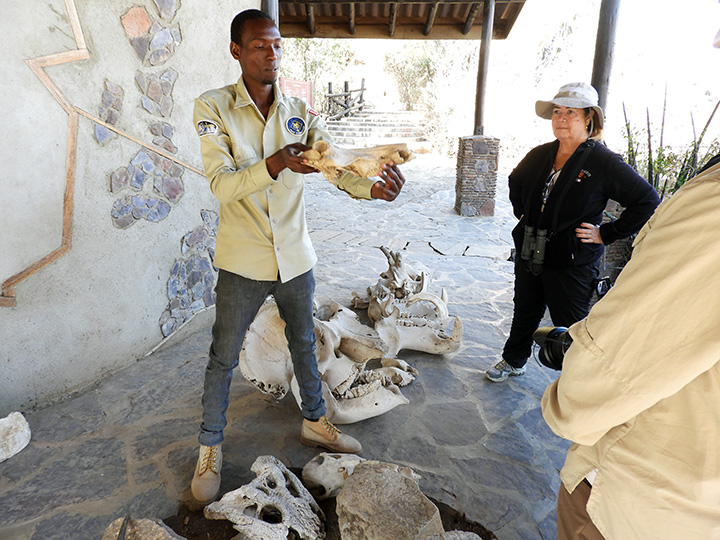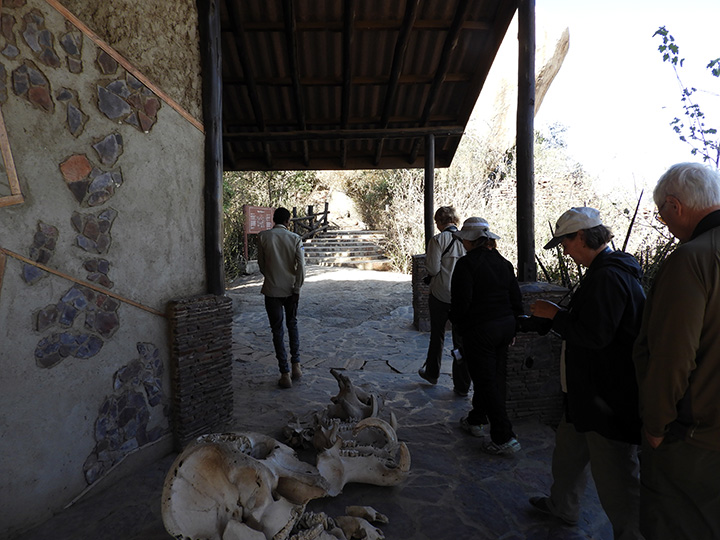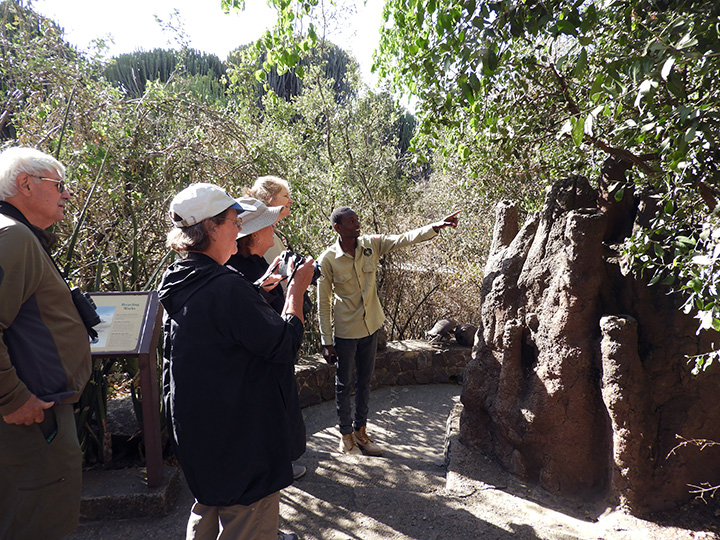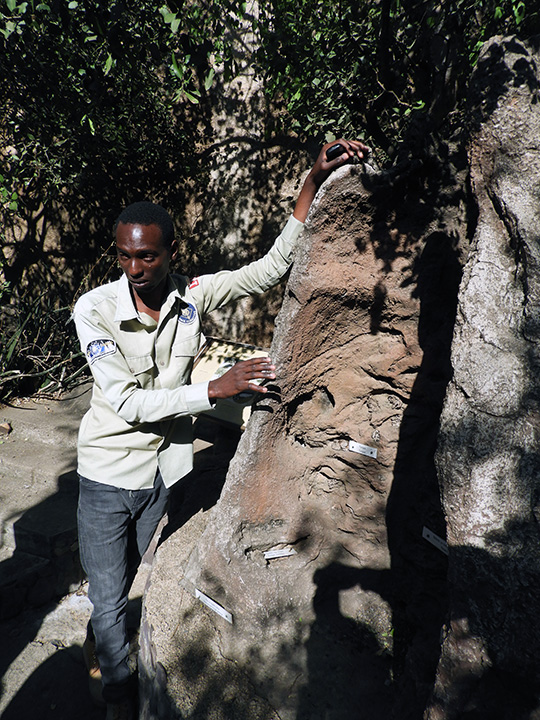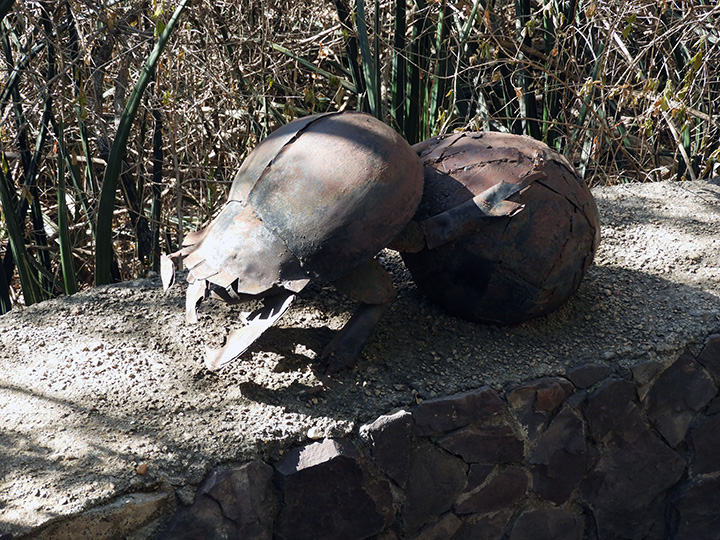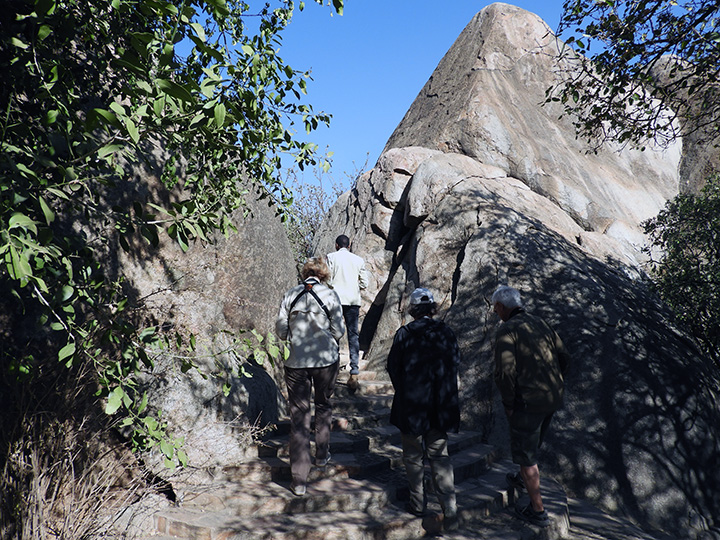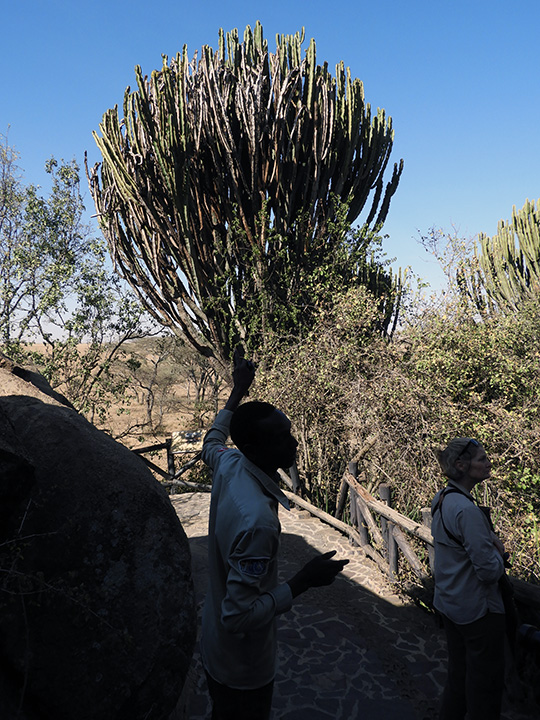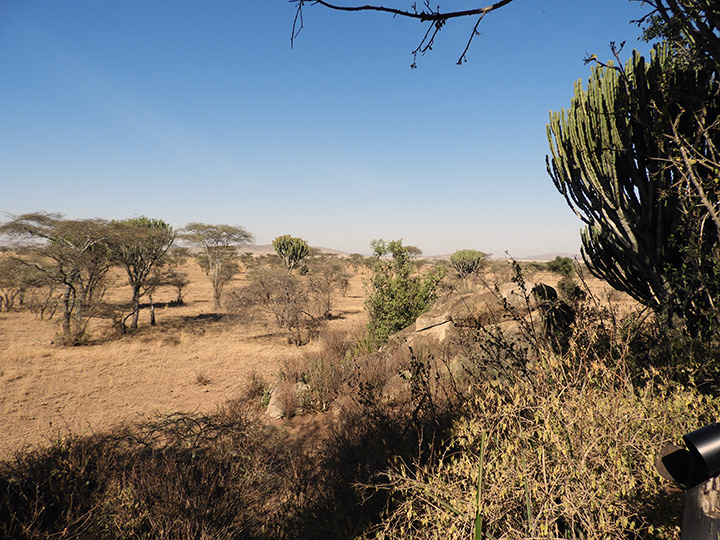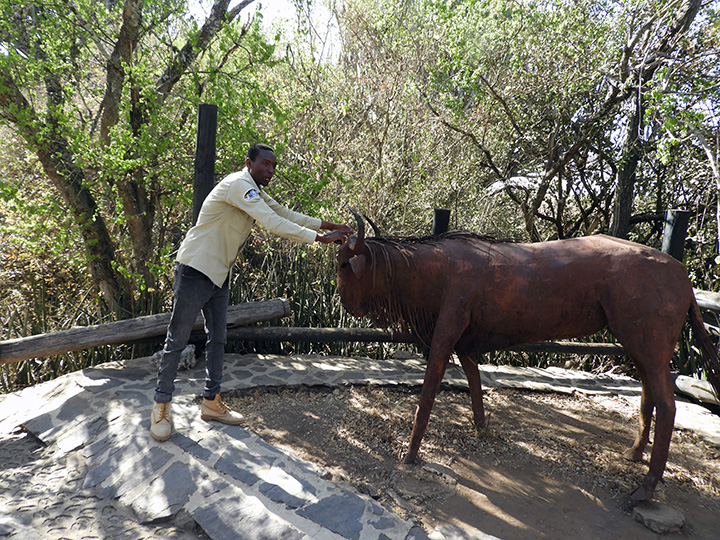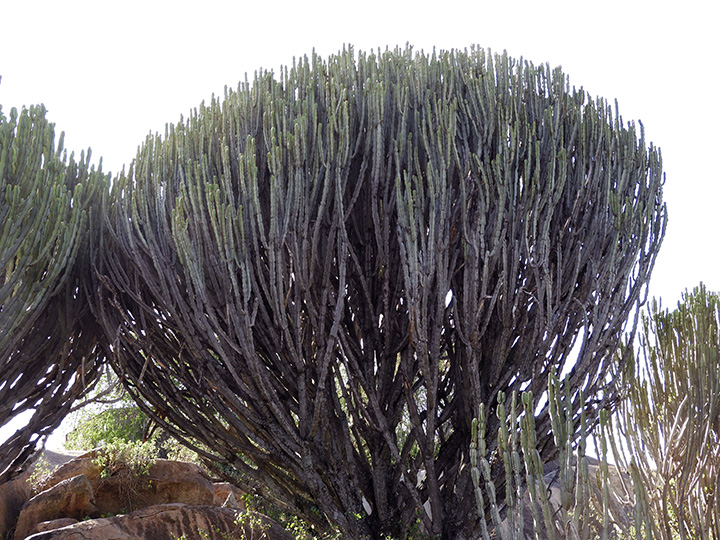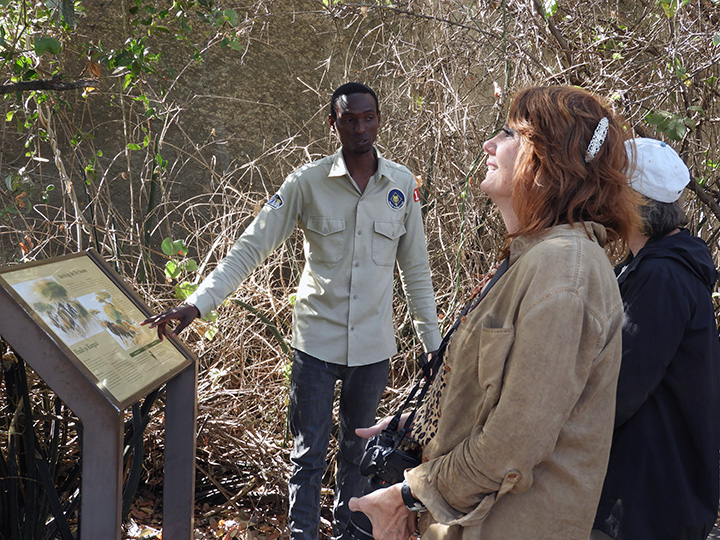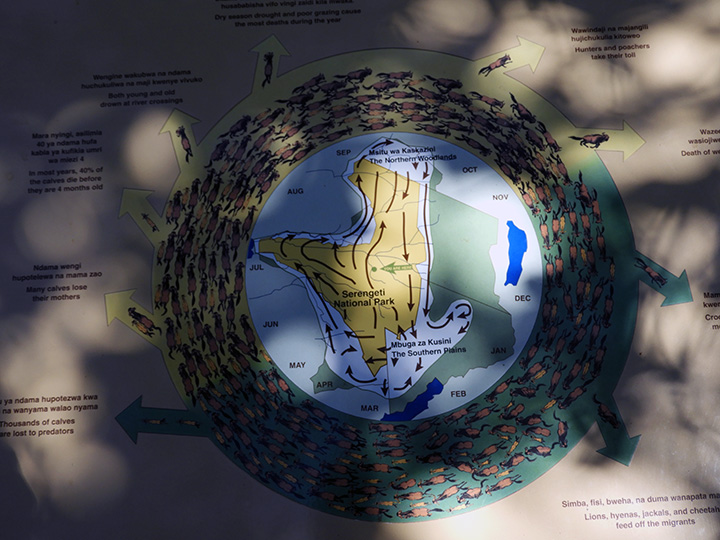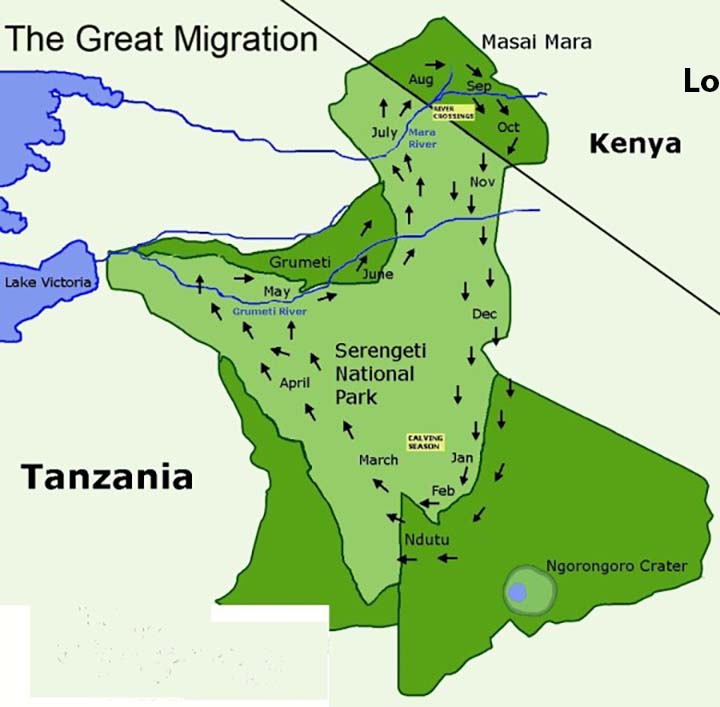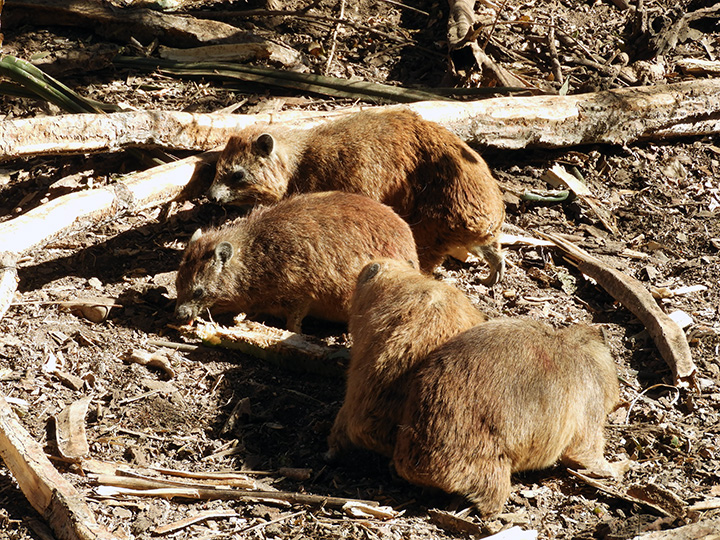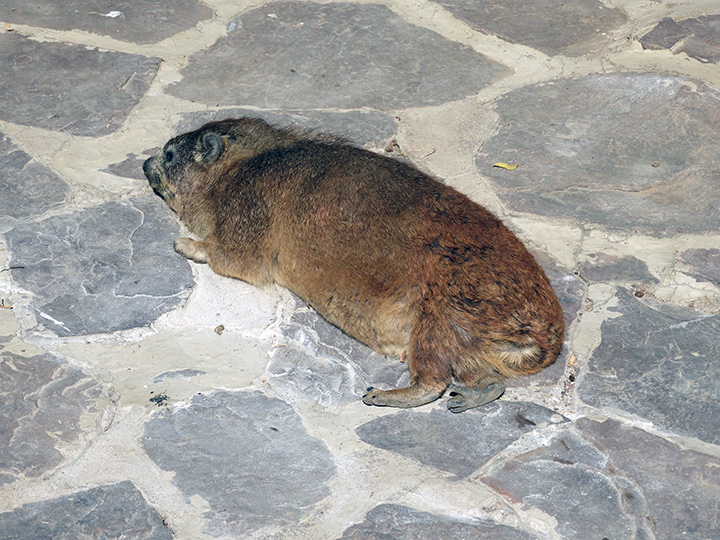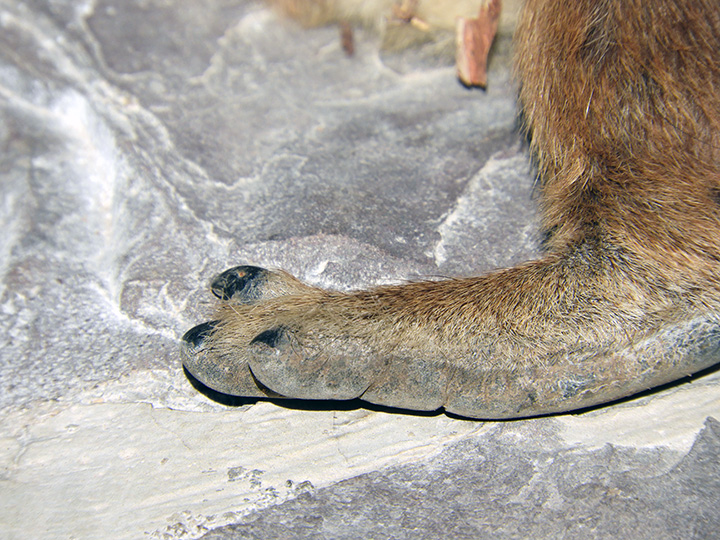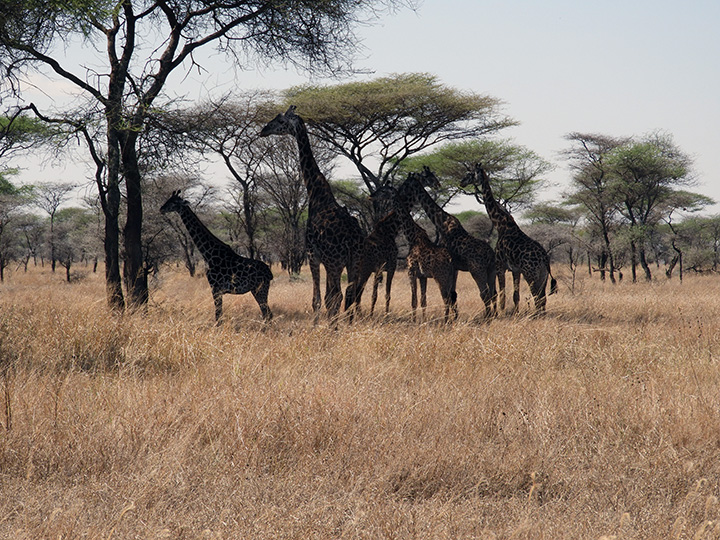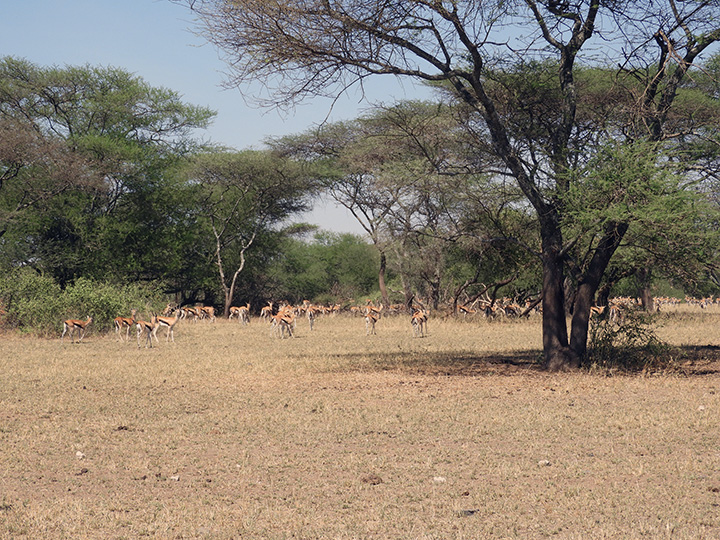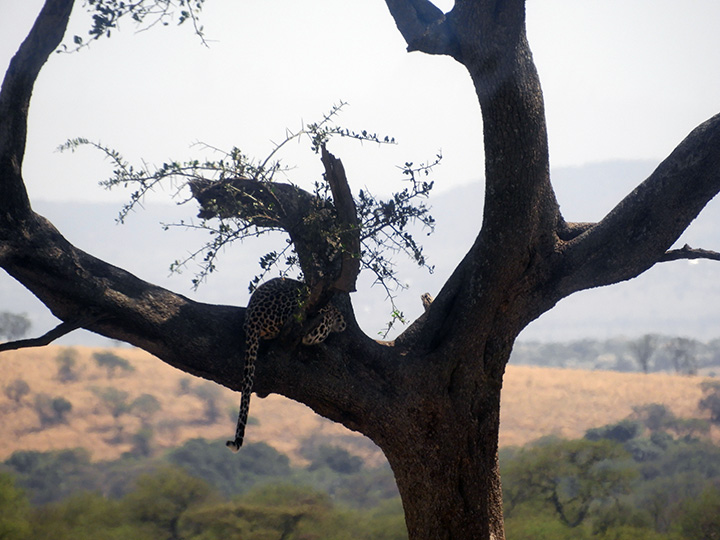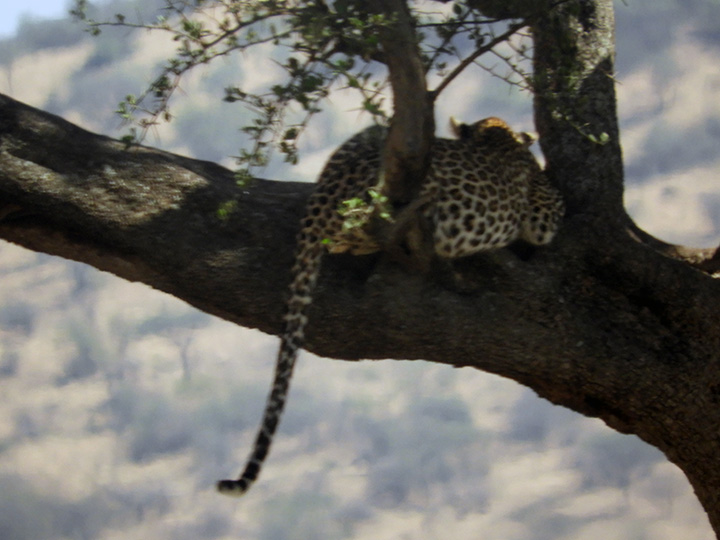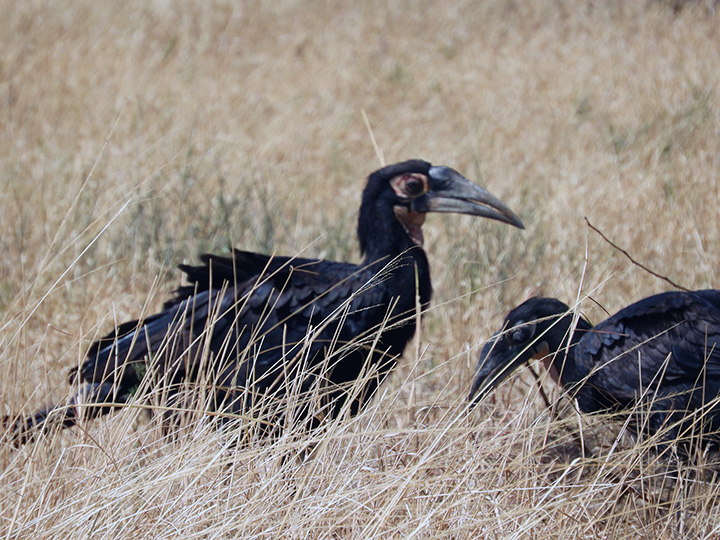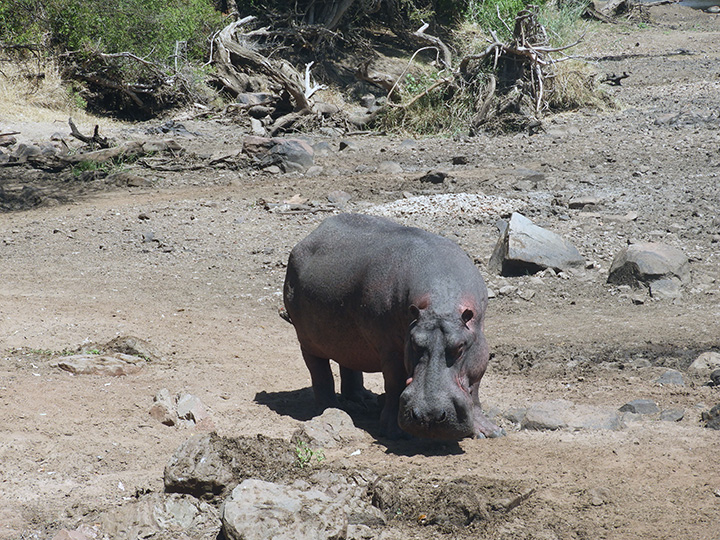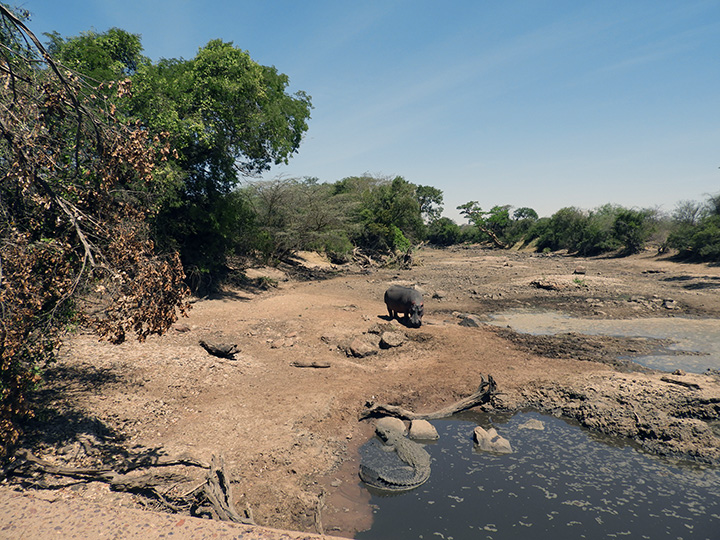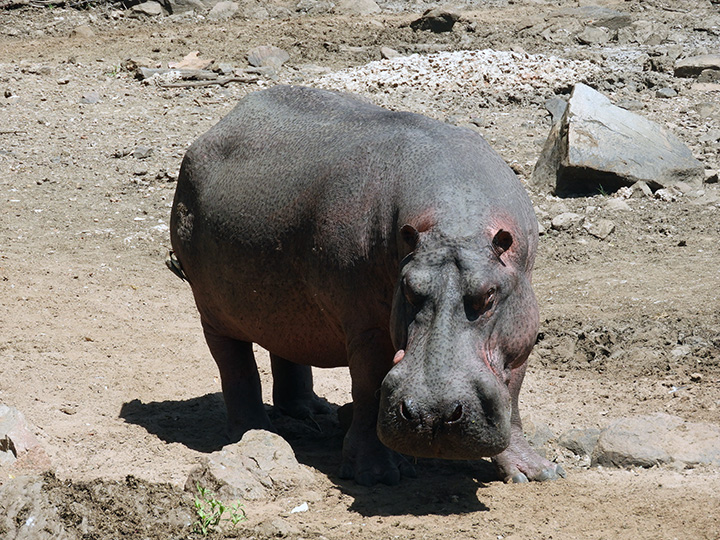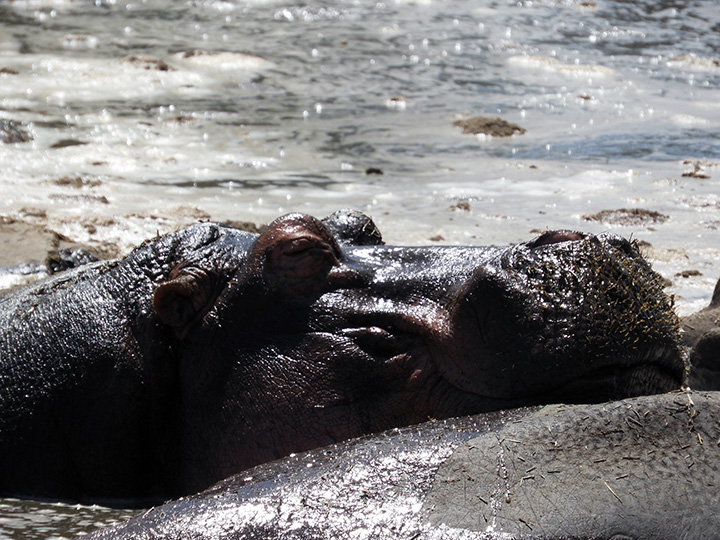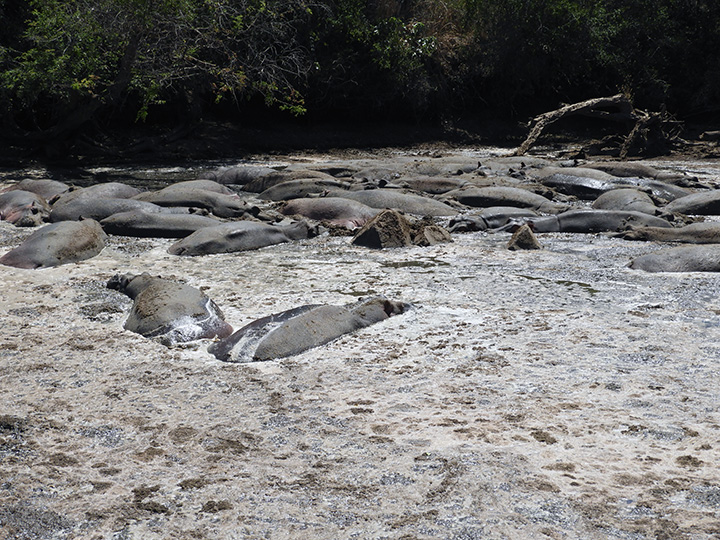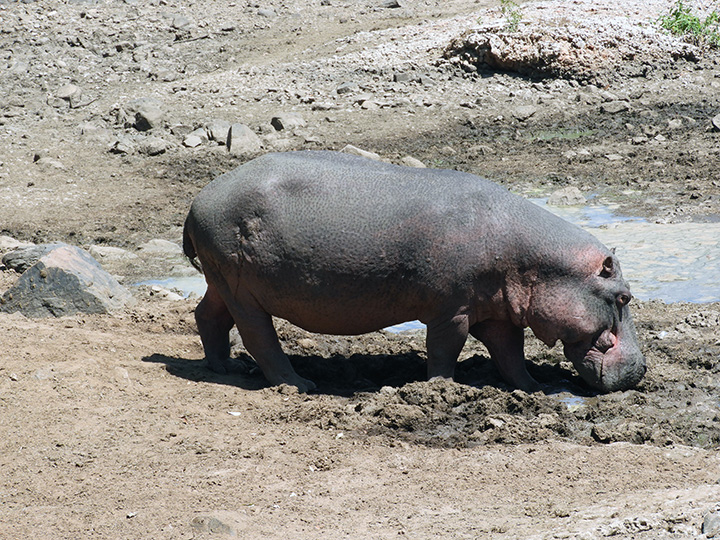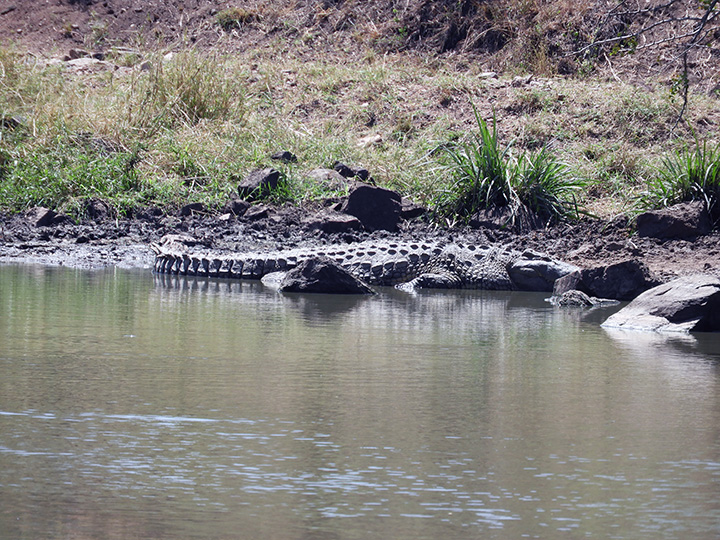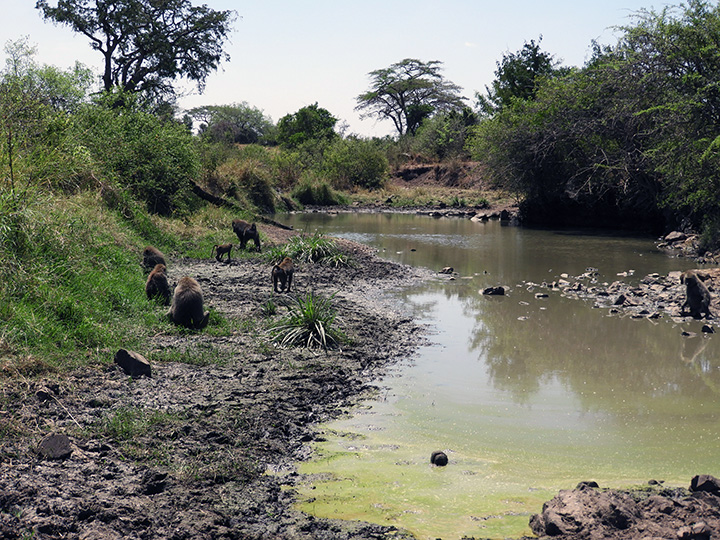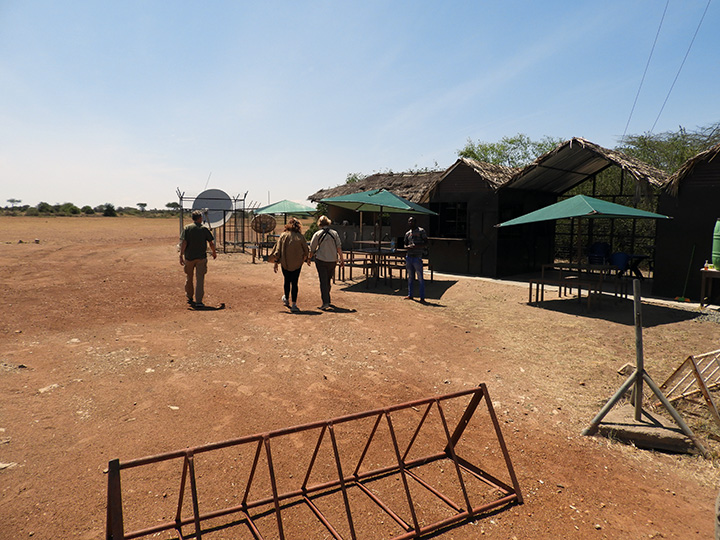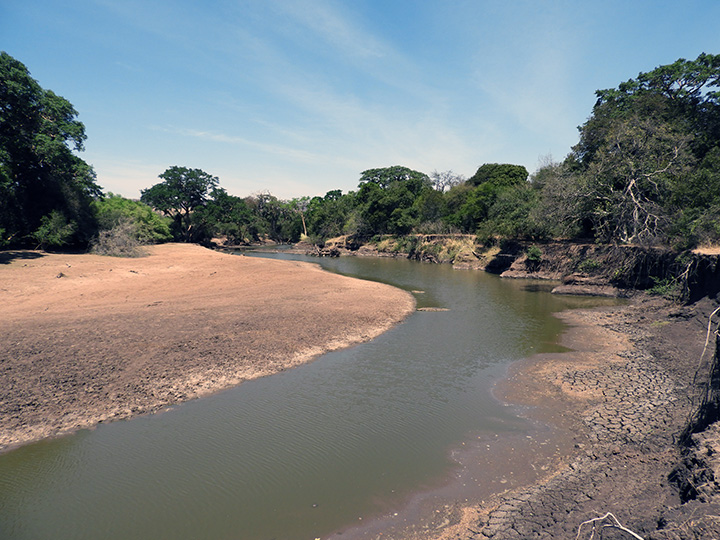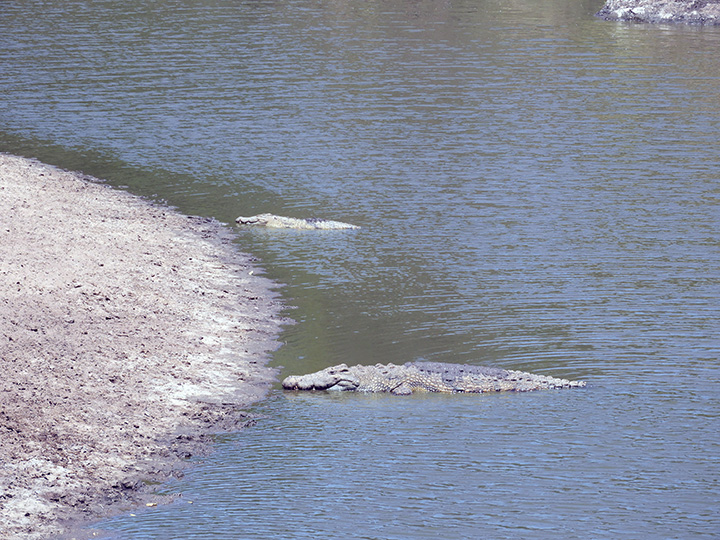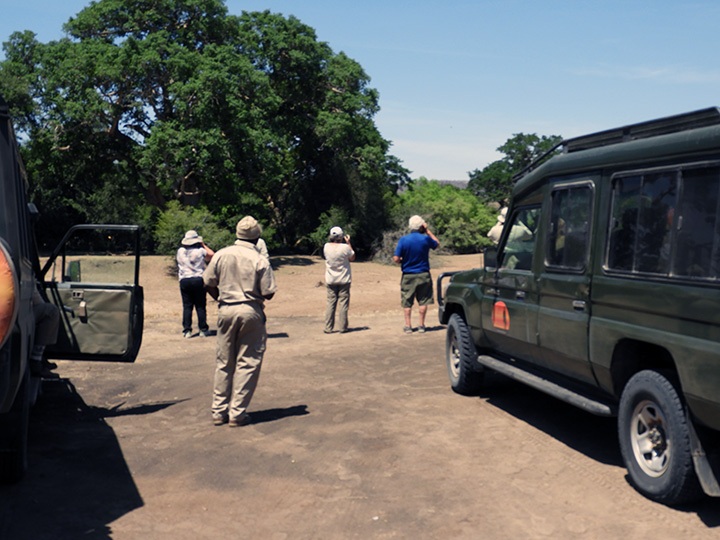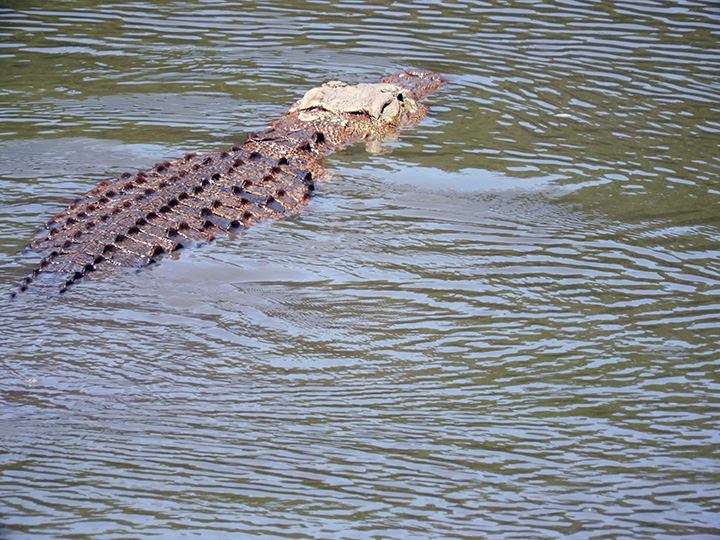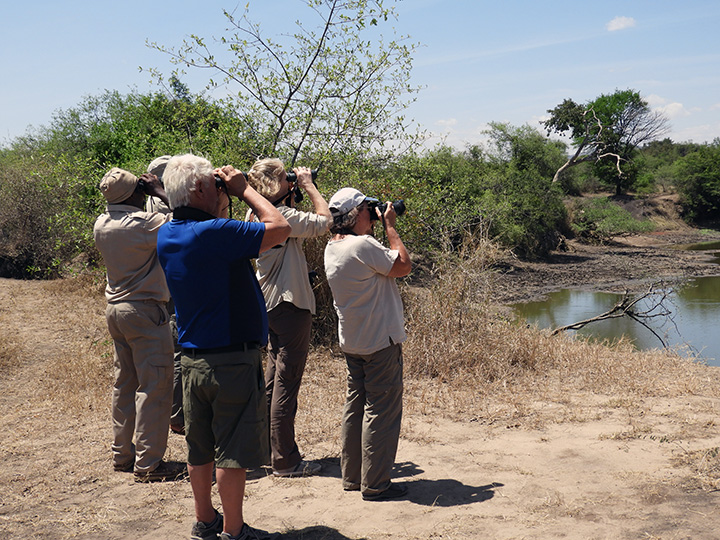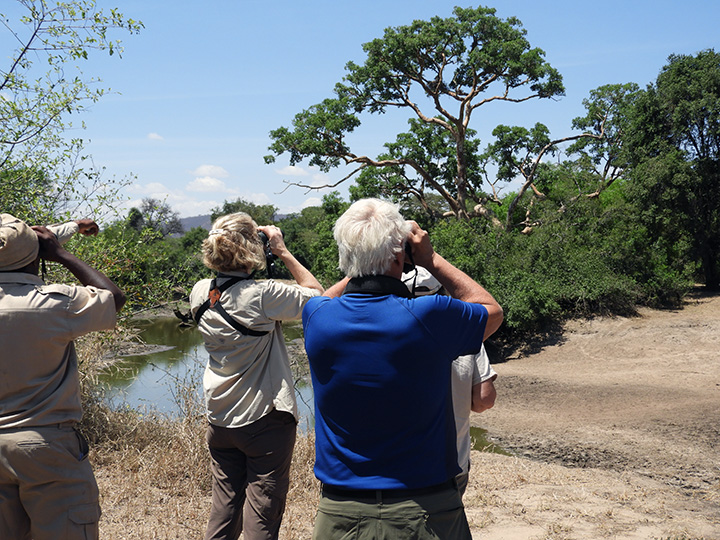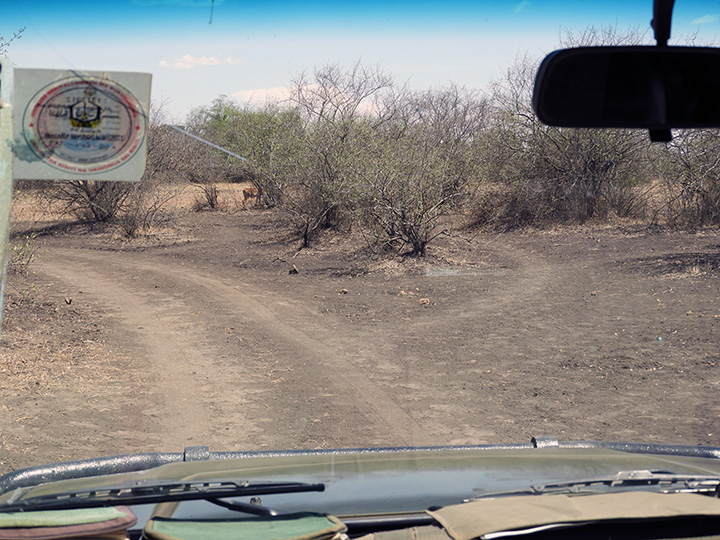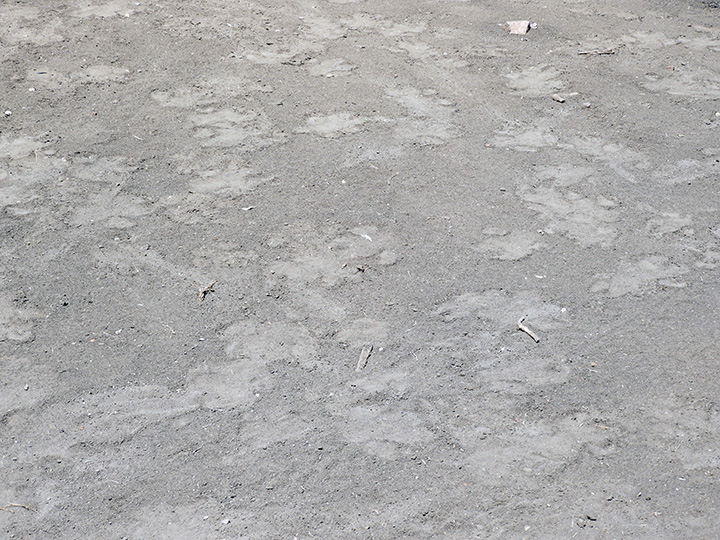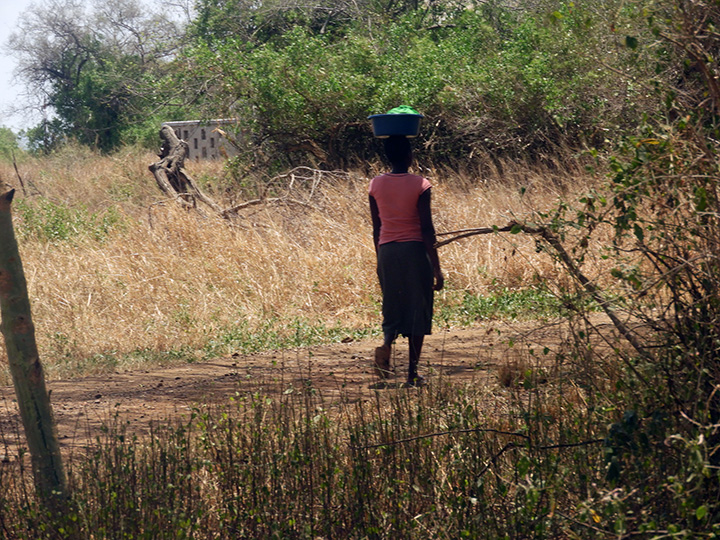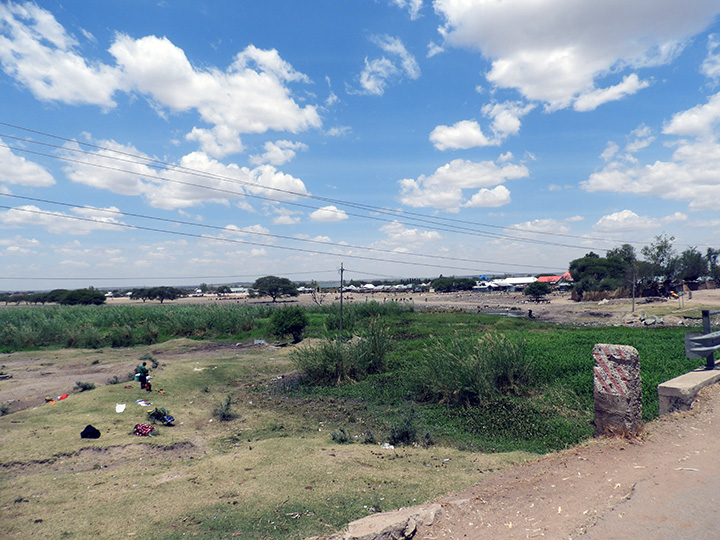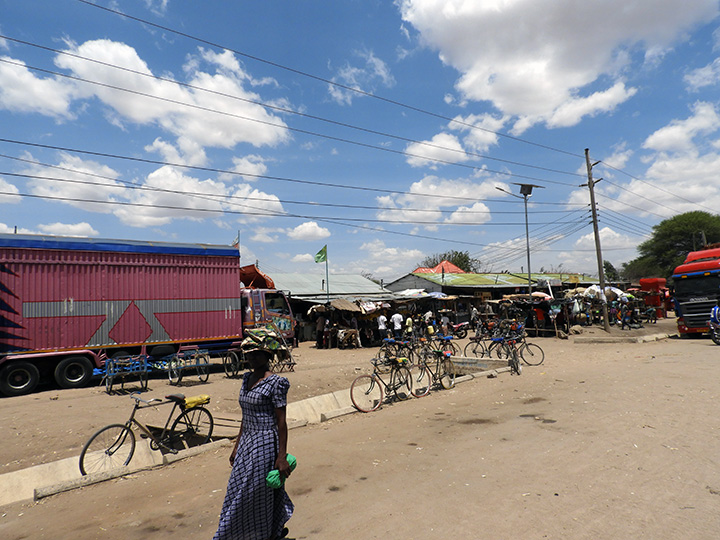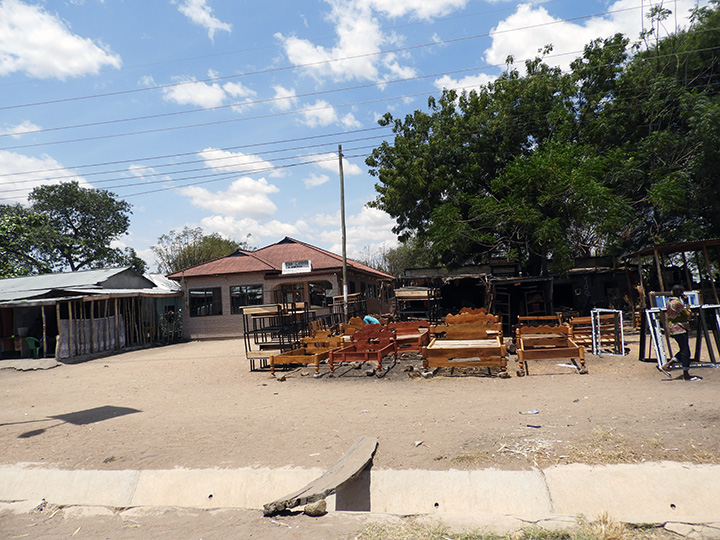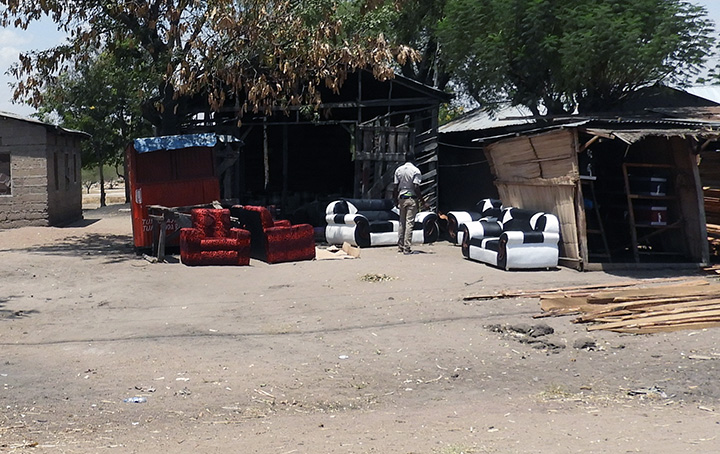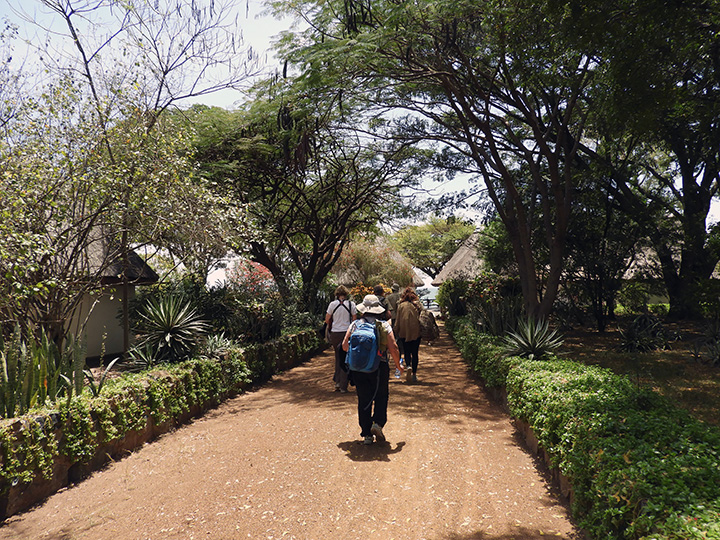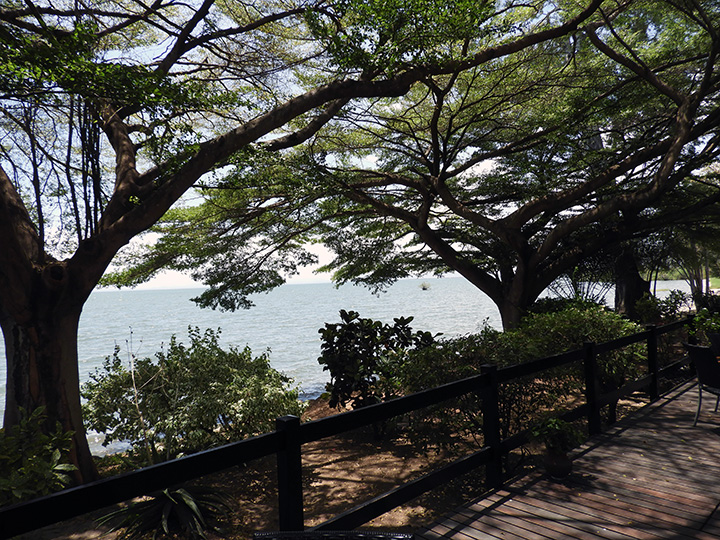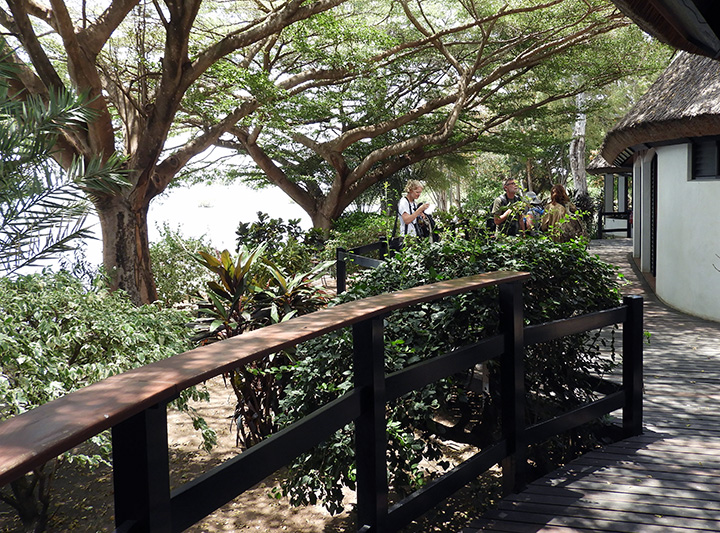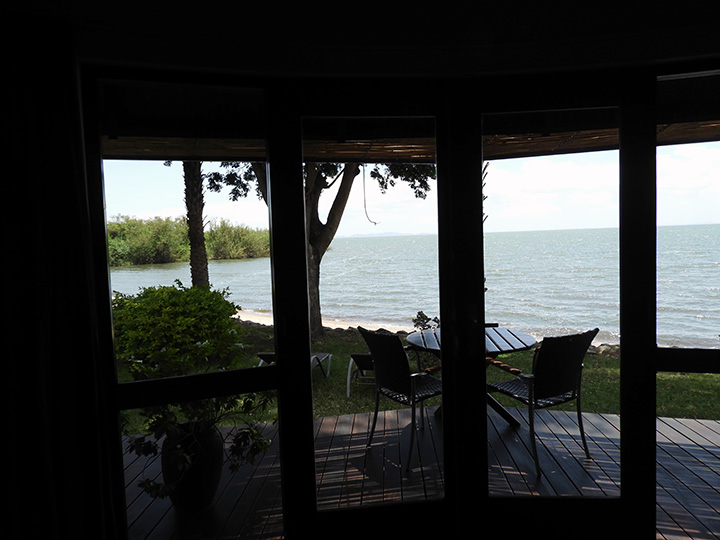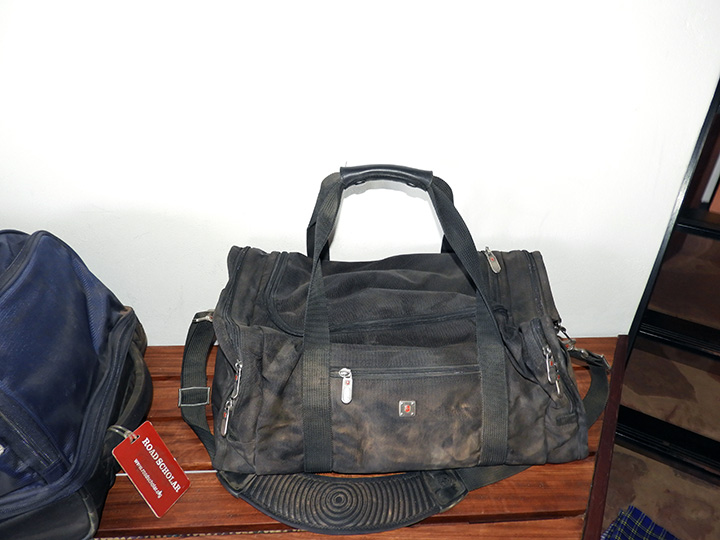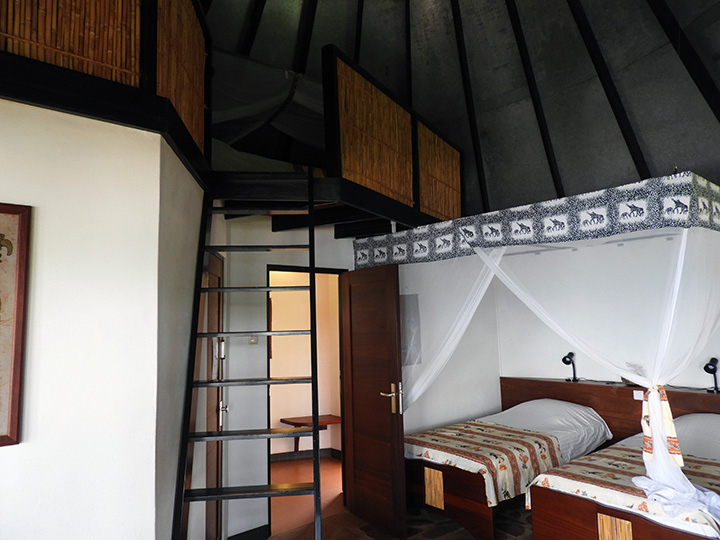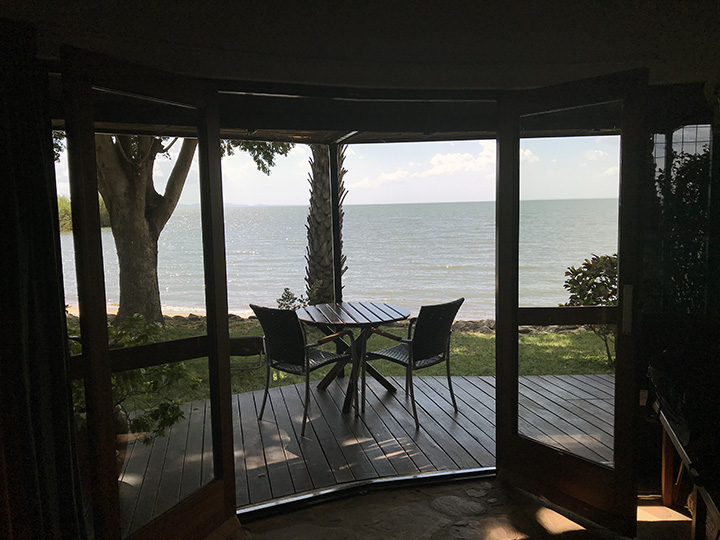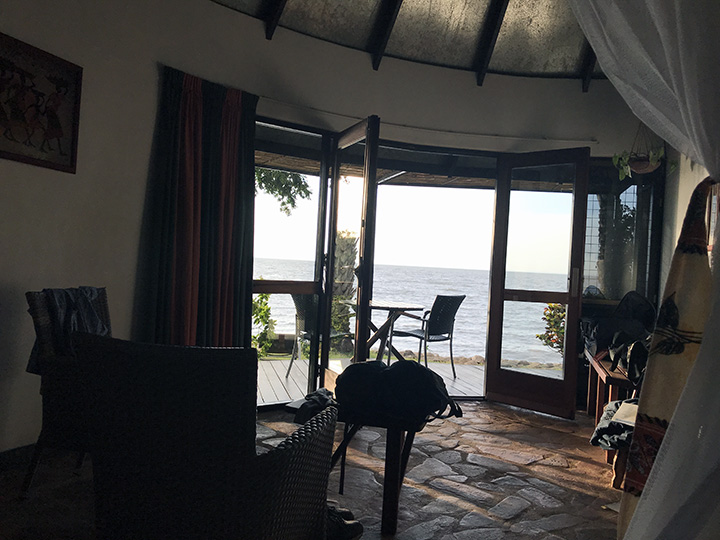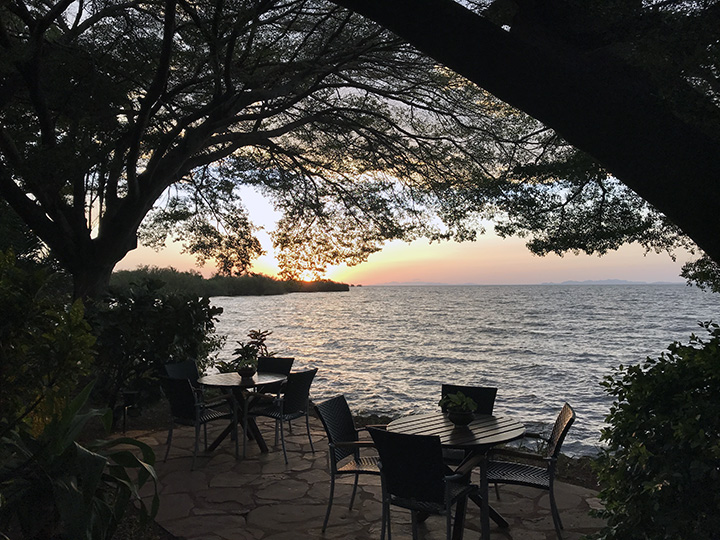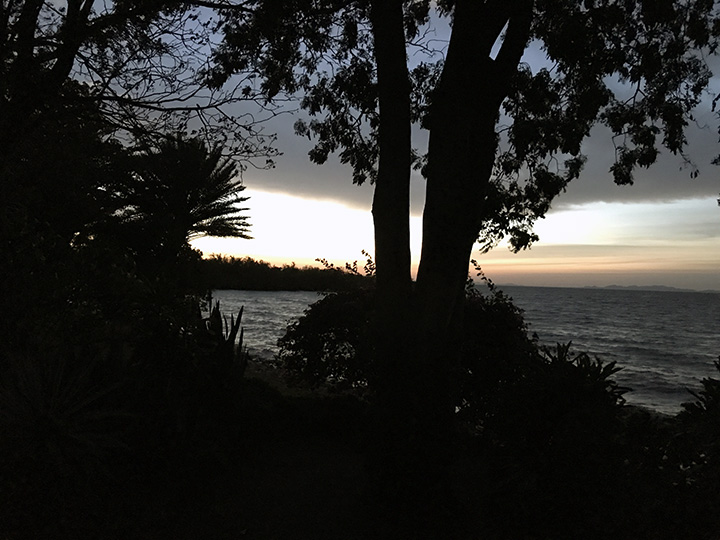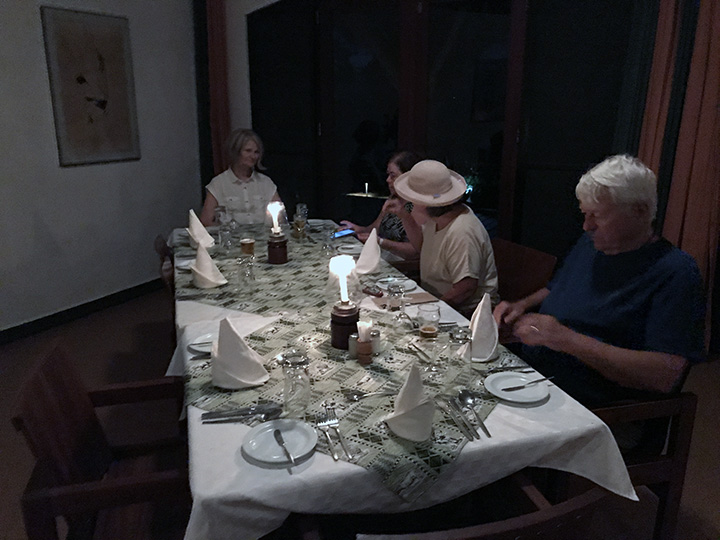|
We'll leave Serengeti National Park today, heading back north toward Kenya. But there'll be lots to see and do along the way.
These ruts look familiar.
So do the gazelles.
By now even the lions no longer generate an adrenaline rush.
Not saying we aren't still watching in wonderment.
He is, after all, a magnificent beast.
Want to see him move?
If we're not tired of watching him, he's certainly getting tired of watching us.
And there he goes.
Those aren't gazelles.
They're impalas.
With great big antlers.
The elephants are destroying trees again.
They try to look innocent, but they're not.
Want to see a baby elephant walk?
One of our concerns on the trip was to avoid tsetse flies, carriers of the deadly African sleeping sickness. It seems the flies are attracted to the color blue, so poisoned traps made of blue and black cloth are hung in strategic spots around the national park to help reduce the tsetse fly population. Kip suggested we refrain from wearing blue clothing and naturally most of my packed wardrobe consisted of everything from blue jeans to blue shirts. But I'd packed plenty of Deep Woods Off for the trip -- even used it once or twice -- and really I don't recall ever seeing an actual tsetse fly on this trip. Bugs really weren't a big annoyance. Guess those traps work.
This, I do believe, is a topi. I think that because Wikipedia says "Topi resemble hartebeest but have a darker coloration and lack sharply angled horns. They have elongated heads, a distinct hump at the base of the neck, and reddish brown bodies with dark purple patchings on their upper legs. They also have a mask-like dark coloration on the face. Their horns are ringed and lyrate shaped. Their coats are made of short, shiny hairs."
Yep, that's him all right.
Let's go look down this way.
Cape buffalo!
Know what you call a group of Cape buffalo? An obstinacy. Or if you want to call it a herd, go ahead.
Want to see them move?
Dik dik!
Something's going on over there.
Monkeys, I think.
Yep.
And they have little ones.
Awww.
Hang on kid, here we go.
Where it's dry and dusty there are gazelles.
Where it's wet, too.
This I do believe is a hartebeest. Why not a topi? The hartebeest is lighter in coloration and does not have the darker face.
Do you see dark facial coloration? I don't.
The Thompson's gazelle is admiring himself in the reflection.
So's the hartebeest.
We've arrived at the Serengeti National Park Visitor Center.
And we're greeted by a hyrax. He still looks like he'd bite.
Our guide is wearing a Cub Scout shirt but he says he has nothing to do with Scouting..."it's just a shirt."
He has lots of skulls to show us and he names every one, every single one, and on and on....
If you want to identify the remains of a dead animal, this is your guy.
Mandy pays close attention.
More bones. There were lots of them.
Enough of that...let's go on a nature hike.
Here's a model of a termite mound just like the ones we've seen along the road.
The difference is, this one has helpful labels.
If you want to see a metal sculpture of a dung beetle rolling a ball of poop, you've come to the right placer.
Let's keep hiking.
It's a candelabra tree up close.
There are lots of dangerous animals out there.
But here in the visitor center you can just grab a wildebeest by the horns because he's made of metal.
Candelabra tree up closer.
Our guide explains it all and Kathy is fascinated.
That map illustrates the great wildebeest migration around the Serengeti.
And this one shows it a little better.
The Hadzabe tribe, which lives in this area, still holds to a traditional hunter-gatherer way of life thousands of years old.
Know what you call a group of hyraxes? A colony.
Look at the little hyrax. I know this will sound hard to believe, but the hyrax is actually the elephant's closest relative. Yes, really.
So how is that possible? Well, male hyraxes lack a scrotum and their testicles are tucked away in the abdominal cavity next to the kidneys – same goes for elephants. Female hyraxes have a pair of teats near their arm pits like elephants but in addition they have four more in their groin area. Like elephants, hyraxes also have tusks growing from their incisor teeth. In other mammalian species, tusks grow from the canines. Another characteristic that hyraxes share with elephants is that they have flattened hoof-like nails on the tips of their toes rather than the curved claws seen on other mammals. See the toes? Just like an elephant, or so they say. That's enough visitor center. Let's hit the road.
Never pass up an opportunity to take a picture of giraffes.
Or zebras and gazelles.
Know what you call a herd of antelopes? A herd. Hah.
Kip spotted a leopard up in a tree. Actually he first spotted that tail, and then the leopard.
Of course it's a leopard. See the rosettes?
Hornbill
Hippo
Hippo and crocodile
Mr. Hippo doesn't seem concerned about that crocodile. I bet he could squash one pretty easily.
Lotsa hippos
It's a bloat of hippos!
It's a glorious day to enjoy the sun, the water and the mud. And other hippos.
More bloat.
Did you know that hippos are dangerous to humans?
Ungainly as it is, the hippopotamus is the world's deadliest large land mammal, killing an estimated 500 people per year in Africa. Hippos are aggressive creatures, and they have very sharp teeth. And you would not want to get stuck under one; at up to 6,000 lbs. they can crush a human to death.
We may not have seen a wicked witch on this trip, but we did see a flying monkey.
And some big old crocodiles.
Apparently monkeys and crocs just live and let live, at this watering hole anyway.
Road Scholars occasionally need watering holes too.
Wonder if we'll see any wildlife in this little river?
Well, for starters, here comes a crocodile
Know what you call a group of crocodiles? A congregation.
Some of the Road Scholars loved finding new birds.
I mostly stuck to the more dangerous creatures.
Birds. They're looking at birds.
Oh look! It's another bird! Look, I shouldn't make fun. I know this is fascinating to lots of people. I get it. I mean I like spotting a beautiful bird now and then myself. Watching my friends enjoy finding a bird made me happy too.
I just am partial to the big guys. Now why are there all those flower patterns in the dust?
Ah. Hippo tracks. Have I mentioned they are among the most dangerous animals on earth. And they obviously like to walk around here?
Let's go.
There are lots of animals to be spotted around here, even if we are moving right along.
There are people to be spotted, too. All my life I've marveled that there are places in the world where people carry loads balanced on their heads. It's not like I haven't seen it in the movies. But look! There it is in real life!
Yep, we've left the Serengeti National Park and we've found civilization.
Interesting...but maybe not as lovely as unspoiled nature.
Lotsa commerce here as we drive through town.
It's a furniture store!
I wonder if a new sofa would fit in an overhead bin on my flight home?
Now we've arrived at our home for the night, Speke Bay Lodge.
And oh, what a marvelous place this was.
No kidding. This was one of the most wonderful lodgings I've encountered in all my travels.
If you ever go to Tanzania, spend some time here.
Here's the view from inside my room.
And here's the view of my bags which were delivered to my room after spending all day in the back of a Toyota Land Cruiser traveling bumpy, dusty Serengeti roads. Everything was filthy, and really this was the only day that happened. I wonder if somebody didn't completely close the vehicle's back door? Whatever, at the end of today, my bags were as grungy as I was.
And here's a view of my room. As a single traveler I had all this to myself, but if I'd had a family with me there would have been plenty of room down below and up in the loft.
Just look at that view of Lake Victoria from inside my room. I've swung the glass doors wide and refreshing breezes are blowing over me.
Maybe I'll just lie here in my bed and take a little nap.
Nope, the views are too spectacular to miss.
The sun is setting over Lake Victoria. This is where Humphrey Bogart and Katherine Hepburn and the not-quite sunk African Queen blew up the German warship Louisa. I am loving this.
Time for dinner at our fantastic lodge. Golly I wish we could stay here longer.
|

